#10 July 1954
Text


"You should always celebrate your successes because someone else will celebrate your failures."
"It's fundamental that what we do only exists in our own universe. When you like Pet Shop Boys, you are in our world."
Happy 70th NEIL TENNANT 💫
* 10 July 1954
#Neil Tennant#Happy Birthday love 🌈#10 July 1954#Pet Shop Boys#PSB#... every time I see you something happens to me 🫠#my edits
74 notes
·
View notes
Text

Beware #10 - July 1954.
582 notes
·
View notes
Text
In 1912, Kafka and Brod traveled to the Goethe House and spent a week there, from June 30 to July 6.
Note in the diaries: At the Goethe House, Kafka became acquainted with Margarethe Kirchner (1896–1954; called Grete in the entries that follow). Brod noted in his travel diary: “Kafka flirts successfully with the beautiful daughter of the caretaker”. In his 1928 novel Zauberreich der Liebe (Magic Kingdom of Love), in which Brod endowed a character named Richard Garta with character traits of Kafka’s, he wrote: “A little, quite tender relationship forms between him and the pretty daughter of the caretaker of the Goethe House on the Frauenplan…. As a result, Garta and with him Christof are invited to the caretaker’s residence, then go in and out of Goethe’s residence with the beautiful girl as if at home, are admitted into the otherwise inaccessible garden, may look around Goethe’s rooms outside visiting hours, thus undisturbed by the patter of tourists.”
Parts where Kafka mentions Margarethe (Grete):
She had already run past us with her little sister when we were sitting at the foot of the stairs.
She is standing by a rosebush. Pushed by Max I go to her, learn of the excursion to Tiefurt. I’ll go too.
Finally on the way back definite connection without a real relationship.
Incomprehensibly meeting 3 times in the evening. She with her girlfriend. The first time we accompany them. In the evening after 6 I can always come into the garden. Now she has to go home. Then meeting again on the circle, which has been prepared for a duel. They are speaking with a young man in a manner more hostile than friendly. But why didn’t they stay home, since we had escorted them to Goetheplatz. Hadn’t they had to get home as quickly as possible? But why were they running now, apparently without having been home at all, pursued by the young man or in order to meet him out of Schillerstrasse, down the small staircase, onto the out-of-the-way circle? Why, after having spoken a few words with the young man at a distance of 10 paces and apparently declined his company, were they turning around again there and running back alone? Had we disturbed them when we had passed by with only a simple greeting?
Constant watching out for a chance to speak with her. She goes to sewing with a friend. We stay behind.
She smiles at me senselessly uselessly behind her father’s back. Sad.
Frequently meeting Grete. While eating strawberries; outside Werthers Garten, where there’s a concert. The agility of her body in her loose dress.
Goethe House. Photographs are to be taken in the garden. She is nowhere to be seen, I am then permitted to fetch her. She is always quite trembling with movement, but moves only when one speaks to her. Photographs are taken. The two of us on the bench. Max shows the man how to do it. She grants me a rendezvous for the next day.
Confirmation of the promised rendezvous with a loud yes. She was looking out the door. False explanation of this, for even while we were present she looked out. I asked once again: “Even if it’s raining?” “Yes.”
She didn’t come to the rendezvous.
I away from the table, because I thought I saw her. Was mistaken. Then everyone to the Goethe House. Greeted her.
She comes with 2 girlfriends. I take her aside. Yes she had to leave 10 min. earlier yesterday, has learned only now from her girlfriends of my waiting yesterday. She also had trouble because of her dancing lessons. She definitely doesn’t love me, but she has some respect. I give her the box of chocolates entwined with the little heart and the chain and accompany her a stretch. A few words back and forth about a rendezvous. Tomorrow at 11 in front of the Goethe House. It can only be an excuse, she certainly has to cook, and then in front of the Goethe House, but I still accept it. Sad acceptance.
One-hour walk with Grete. She apparently comes with the consent of her mother, with whom she still speaks from the street through the window. Pink dress, my little heart. Restlessness because of the big ball in the evening. Had no relationship to her. Broken-off, constantly resumed conversation. Walking now especially fast, then especially slow again. Straining not to let it become clear at any price how we are connected by not one little thread. What drives us through the park together? Only my defiance?
At Schlaf’s toward evening. Visit at Grete’s beforehand. She stands outside the slightly open kitchen door in the ball dress praised long before, which is not even as beautiful as her usual one. Eyes very red with tears, apparently because of her main dancing partner, who has already caused her a great deal of trouble in general. I say goodbye forever. She doesn’t know and if she did know, it wouldn’t matter to her at all.
I say goodbye forever. She doesn’t know and if she did know, it wouldn’t matter to her at all.
#idk why nobody bats an eye that kafka was twice the age of the girl but i guess its understood as 'acceptable' because#that was normal back then? even the girl's family doesn't seem to mind that this man is seeing their daughter…#different times different norms but whatever the time going for a girl twice younger than u is never ok#and brod is a weirdo for writing that story…#franz kafka diaries#franz kafka#daily kafka#notes
40 notes
·
View notes
Text
"That's All Right" 70th anniversary limited-edition collector's vinyl single (2024)


Elvis' legendary recording session on July 5, 1954, at Sun Studio.
Only 1954 copies of this Graceland exclusive collectible 10" vinyl single were to be released, but... its already SOLD OUT. 😭
#i love the william speer's 1955 portraits of elvis#to me they are his most perfect portraits ever done#so... this vinyl is so f&¨$% gorgeous to me#but i just saw on graceland website it is sold out 😭#i iive in Brazil... with all the importation taxes this would cost a fortune to me so i didnt had the chance to buy it right away but#but i'm curious if any of you ordered it#if you did it please share pictures of this baby#its so damn pretty#i wonder if its gonna be available again#screaming crying throwing up at the thought I don't have one of those babies 😭
27 notes
·
View notes
Text
Lista dei brevetti per la modifica del clima.
Dal 1891 al 2023.
United States Patent and Trademark Office.
...
0462795 – July 16, 1891 – Method Of Producing Rain-Fall
803180 – October 31, 1905 – Means for Producing High Potential Electrical Discharges
1103490 – August 6, 1913 – Rain-Maker
1225521 – September 4, 1915 – Protecting From Poisonous Gas In Warfare
1279823 – September 24, 1918 – Process and Apparatus for Causing Precipitation by Coalescence of Aqueous Particles Contained in the Atmosphere
1284982 – November 19, 1918 – Process and Apparatus for Procuring and Stimulating Rainfall
1338343 – April 27, 1920 – Process And Apparatus For The Production of Intense Artificial Clouds, Fogs, or Mists
1358084 – November 9, 1920 – Method of Producing Fog-Screens
1619183 – March 1, 1927 – Process of Producing Smoke Clouds From Moving Aircraft
1665267 – April 10, 1928 – Process of Producing Artificial Fogs
1892132 – December 27, 1932 – Atomizing Attachment For Airplane Engine Exhausts
1895765 – January 31, 1933 – Artificial Production of Fog
1928963 – October 3, 1933 – Electrical System And Method
1957075 – May 1, 1934 – Airplane Spray Equipment
1993316 – March 5, 1935 – Apparatus for and Method of Producing Oil Fog
2052626 – September 1, 1936 – Method of Dispelling Fog
2097581 – November 2, 1937 – Electric Stream Generator – Referenced in 3990987
2173756 – September 19, 1939 – Process of Producing Fog or Mist by Partial and Flameless Combustion
2352677 – July 4, 1944 – Artificial Fog Production
2476171 – July 18, 1945 – Smoke Screen Generator
2409201 – October 15, 1946 – Smoke Producing Mixture
2480967 – September 6, 1949 – Aerial Discharge Device
2527230 – October 24, 1950 – Method of Crystal Formation and Precipitation
2527231 – October 24, 1950 – Method of Generating Silver Iodide Smoke
2550324 – April 24, 1951 – Process For Controlling Weather
2582678 – June 15, 1952 – Material Disseminating Apparatus For Airplanes
2611992 – September 30, 1952 – Engine Exhaust Operated Fluent Material Distributor
2614083 – October 14, 1952 – Metal Chloride Screening Smoke Mixture
2633455 – March 31, 1953 – Smoke Generator
2688069 – August 31, 1954 – Steam Generator – Referenced in 3990987
2721495 – October 25, 1955 – Method And Apparatus For Detecting Minute Crystal Forming Particles Suspended in a Gaseous Atmosphere
2730402 – January 10, 1956 – Controllable Dispersal Device
2903188 – April 2, 1956 – Control of Tropical Cyclone Formation
2756097 – July 24, 1956 – Process for Weather Control
2801322 – July 30, 1957 – Decomposition Chamber for Monopropellant Fuel – Referenced in 3990987
2835530 – May 20, 1958 – Process for the Condensation of Atmospheric Humidity and Dissolution of Fog
2871344 – January 27, 1959 – Long Distance Communication System
2881335 – April 7, 1959 – Generation of Electrical Fields
2908442 – October 13, 1959 – Method For Dispersing Natural Atmospheric Fogs And Clouds
2962450 – November 29, 1960 – Fog Dispelling Composition
2963975 – December 13, 1960 – Cloud Seeding Carbon Dioxide Bullet
3019989 – February 6, 1962 – Atmospheric Space Charge Modification
2986360 – May 30, 1962 – Aerial Insecticide Dusting Device
3046168 – July 24, 1962 – Chemically Produced Colored Smokes
3056556 – October 2, 1962 – Method of Artificially Influencing the Weather
3126155 – March 24, 1964 – Silver Iodide Cloud Seeding Generator
3127107 – March 31, 1964 – Generation of Ice-Nucleating Crystals
3131131 – April 28, 1964 – Electrostatic Mixing in Microbial Conversions
3140207 – July 7, 1964 – Pyrotechnic Composition
3174150 – March 16, 1965 – Self-Focusing Antenna System
3234357 – February 8, 1966 – Electrically Heated Smoke Producing Device
3274035 – September 20, 1966 – Metallic Composition For Production of Hydroscopic Smoke
3284005 – November 8,1966 – Weather Control by Artificial Means
3300721 – January 24, 1967 – Means For Communication Through a Layer of Ionized Gases
3313487 – April 11, 1967 – Cloud Seeding Apparatus
3338476 – August 29, 1967 – Heating Device For Use With Aerosol Containers
3375148 – March 26, 1968 – Pyrotechnics Comprising Silver Iodate, Ammonium Nitrate, Nitrocellulose and Nitrate Esters
3378201 – April 16, 1968 – Method for Precipitating Atmospheric Water Masses
3410489 – November 12, 1968 – Automatically Adjustable Airfoil Spray System With Pump
3418184 – December 24, 1968 – Smoke Producing Propellant
3429507 – February 25, 1969 – Rainmaker
3432208 – November 7, 1967 – Fluidized Particle Dispenser
3441214 – April 29, 1969 – Method And Apparatus For Seeding Clouds
3445844 – May 20, 1969 – Trapped Electromagnetic Radiation Communications System
3456880 – July 22, 1969 – Method Of Producing Precipitation From The Atmosphere
3518670 – June 30, 1970 – Artificial Ion Cloud
3517512 – June 30, 1970 – Apparatus for Suppressing Contrails
3534906 – October 20, 1970 – Control of Atmospheric Particles
3545677 – December 8, 1970 – Method of Cloud Seeding
3564253 – February 16, 1971 – System And Method For Irradiation Of Planet Surface Areas
3587966 – June 28, 1971 – Freezing Nucleation
3595477 – July 27, 1971 – Fog Dispersing Method and Compositions
3601312 – August 24, 1971 – Methods of Increasing The Likelihood oF Precipitation By The Artificial Introduction Of Sea Water Vapor Into The Atmosphere Winward Of An Air Lift Region
3608810 – September 28, 1971 – Methods of Treating Atmospheric Conditions
3608820– September 20, 1971 – Treatment of Atmospheric Conditions by Intermittent Dispensing of Materials Therein
3613992 – October 19, 1971 – Weather Modification Method
3630950 – December 28, 1971 – Combustible Compositions For Generating Aerosols, Particularly Suitable For Cloud Modification And Weather Control And Aerosolization Process
USRE29142 – May 22, 1973 – Combustible compositions for generating aerosols, particularly suitable for cloud modification and weather control and aerosolization process
3659785 – December 8, 1971 – Weather Modification Utilizing Microencapsulated Material
3666176 – March 3, 1972 – Solar Temperature Inversion Device
3677840 – July 18, 1972 – Pyrotechnics Comprising Oxide of Silver For Weather Modification Use
3690552 – September 12, 1972 – Fog Dispersal
3722183 – March 27, 1973 – Device For Clearing Impurities From The Atmosphere
3748278 – July 24, 1973 – Process and Agents Having an Influence on the Weather
3751913 – August 14, 1973 – Barium Release System
3769107 – October 30, 1973 – Pyrotechnic Composition For Generating Lead Based Smoke
3784099 – January 8, 1974 – Air Pollution Control Method
3785557 – January 15, 1974 – Cloud Seeding System
3788543 – January 29, 1974 – Uniform Size Particle Generator
3795626 – March 5, 1974 – Weather Modification Process
3802971 – April 9, 1974 – Pyrotechnic Formulations for Weather Modification Comprising a Mixture of Iodates
3808595 – April 30, 1974 – Chaff Dispensing System
3813875 – June 4, 1974 – Rocket Having Barium Release System to Create Ion Clouds In The Upper Atmosphere
3835059 – September 10, 1974 – Methods of Generating Ice Nuclei Smoke Particles For Weather Modification And Apparatus Therefore
3835293 – September 10, 1974 – Electrical Heating Apparatus For Generating Super Heated Vapors
3858805 – January 7, 1975 – Ice Nucleation by Micas
3877642 – April 15, 1975 – Freezing Nucleant
3882393 – May 6, 1975 – Communications System Utilizing Modulation of The Characteristic Polarization of The Ionosphere
3887580 – June 3, 1975 – Method of Crystallization of Water in Supercooled Clouds and Fogs and Reagent Useful in Said Method
3896993 – July 29, 1975 – Process For Local Modification of Fog And Clouds For Triggering Their Precipitation And For Hindering The Development of Hail Producing Clouds
3899129 – August 12, 1975 – Apparatus for generating ice nuclei smoke particles for weather modification
3899144 – August 12, 1975 – Powder contrail generation
3915379 – October 28, 1975 – Method of Controlling Weather
3940059 – February 24, 1976 – Method For Fog Dispersion
3940060 – February 24, 1976 – Vortex Ring Generator
3990987 – November 9, 1976 – Smoke generator
3992628 – November 16, 1976 – Countermeasure system for laser radiation
3994437 – November 30, 1976 – Broadcast dissemination of trace quantities of biologically active chemicals
4042196 – August 16, 1977 – Method and apparatus for triggering a substantial change in earth characteristics and measuring earth changes
RE29,142 – February 22, 1977 – Combustible compositions for generating aerosols, particularly suitable for cloud modification and weather control and aerosolization process
4009828 – March 1 1977 – Organic Nucleating Agent for both Warm and Cold Clouds
4035726 – July 12, 1977 – Method of controlling and/or improving high-latitude and other communications or radio wave surveillance systems by partial control of radio wave et al
4096005 – June 20, 1978 – Pyrotechnic Cloud Seeding Composition
4129252 – December 12, 1978 – Method and apparatus for production of seeding materials
4141274 – February 27, 1979 – Weather modification automatic cartridge dispenser
4167008 – September 4, 1979 – Fluid bed chaff dispenser
4347284 – August 31, 1982 – White cover sheet material capable of reflecting ultraviolet rays
4362271 – December 7, 1982 – Procedure for the artificial modification of atmospheric precipitation as well as compounds with a dimethyl sulfoxide base for use in carrying out said procedure
4373391 – February 15, 1983 – Relative Humidity Sensitive Material
4396152 – August 2, 1983 – Aerosol Dispenser System
4402480 – September 6, 1983 – Atmosphere modification satellite
4412654 – November 1, 1983 – Laminar microjet atomizer and method of aerial spraying of liquids
4415265 – November 15, 1983 – Method and apparatus for aerosol particle absorption spectroscopy
4470544 – September 11, 1984 – Method of and Means for weather modification
4475927 – October 9, 1984 – Bipolar Fog Abatement System
4600147 – July 15, 1986 – Liquid propane generator for cloud seeding apparatus
4633714 – January 6, 1987 – Aerosol particle charge and size analyzer
4643355 – February 17, 1987 – Method and apparatus for modification of climatic conditions
4653690 – March 31, 1987 – Method of producing cumulus clouds
4684063 – August 4, 1987 – Particulates generation and removal
4686605 – August 11, 1987 – HAARP Patent / EASTLUND PATENT – Method and apparatus for altering a region in the earth’s atmosphere, ionosphere, and/or magnetosphere
4704942 – November 10, 1987 – Charged Aerosol
4712155 – December 8, 1987 – Method and apparatus for creating an artificial electron cyclotron heating region of plasma
4742958 – May 10, 1988 – Method for Making Artificial Snow
4744919 – May 17, 1988 – Method of dispersing particulate aerosol tracer
4766725 – August 30, 1988 – Method of suppressing formation of contrails and solution therefor
4829838 – May 16, 1989 – Method and apparatus for the measurement of the size of particles entrained in a gas
4836086 – June 6, 1989 – Apparatus and method for the mixing and diffusion of warm and cold air for dissolving fog
4873928 – October 17, 1989 – Nuclear-sized explosions without radiation
4948257 – August 14, 1990 – Laser optical measuring device and method for stabilizing fringe pattern spacing
1338343– August 14, 1990 – Process and Apparatus for the production of intense artificial Fog
4999637 – March 12, 1991 – Creation of artificial ionization clouds above the earth
5003186 – March 26, 1991 – Stratospheric Welsbach seeding for reduction of global warming
5005355 – April 9, 1991 – Method of suppressing formation of contrails and solution therefor
5038664 – August 13, 1991 – Method for producing a shell of relativistic particles at an altitude above the earths surface
5041760 – August 20, 1991 – Method and apparatus for generating and utilizing a compound plasma configuration
5041834 – August 20, 1991 – Artificial ionospheric mirror composed of a plasma layer which can be tilted
5056357 – October 15, 1991- Acoustic method for measuring properties of a mobile medium
5059909 – October 22, 1991 – Determination of particle size and electrical charge
5104069 – April 14, 1992 – Apparatus and method for ejecting matter from an aircraft
5110502 – May 5, 1992 – Method of suppressing formation of contrails and solution therefor
5156802 – October 20, 1992 – Inspection of fuel particles with acoustics
5174498 – December 29, 1992 – Cloud Seeding
5148173 – September 15, 1992 – Millimeter wave screening cloud and method
5242820 – September 7, 1993 – Army Mycoplasma Patent Patent
5245290 – September 14, 1993 – Device for determining the size and charge of colloidal particles by measuring electroacoustic effect
5286979 – February 15, 1994 – Process for absorbing ultraviolet radiation using dispersed melanin
5296910 – March 22, 1994 – Method and apparatus for particle analysis
5327222 – July 5, 1994 – Displacement information detecting apparatus
5357865 – October 25, 1994 – Method of cloud seeding
5360162 – November 1, 1994 – Method and composition for precipitation of atmospheric water
5383024 – January 17, 1995 – Optical wet steam monitor
5425413 – June 20, 1995 – Method to hinder the formation and to break-up overhead atmospheric inversions, enhance ground level air circulation and improve urban air quality
5434667 – July 18, 1995 – Characterization of particles by modulated dynamic light scattering
5436039 – July 25, 1995 – Artificial Snow in an Aggregate Form of Snow Granules
5441200 – August 15, 1995 – Tropical cyclone disruption
5492274 – February 20, 1996 – Method of and Means for Weather Modification
5546183 – August, 13, 1996 – LIDAR Droplet Size Monitor for In-Flight Measurement of Aircraft Engine Exhaust Contrails, Droplets and Aerosols
5556029 – September 17, 1996 – Method of hydrometeor dissipation (clouds)
5628455 – May 13, 1997 – Method and apparatus for modification of supercooled fog
5631414 – May 20, 1997 – Method and device for remote diagnostics of ocean-atmosphere system state
5639441 – June 17, 1997 – Methods for fine particle formation
5762298 – June 9, 1998 – Use of artificial satellites in earth orbits adaptively to modify the effect that solar radiation would otherwise have on earth’s weather
5800481 – September 1, 1998 – Thermal excitation of sensory resonances
5912396 – June 15, 1999 – System and method for remediation of selected atmospheric conditions
5922976 – July 13, 1999 – Method of measuring aerosol particles using automated mobility-classified aerosol detector
5949001 – September 7, 1999 – Method for aerodynamic particle size analysis
5984239 – November 16, 1999 – Weather modification by artificial satellites
6025402 – February 15, 2000 – Chemical composition for effectuating a reduction of visibility obscuration, and a detoxifixation of fumes and chemical fogs in spaces of fire origin
6030506 – February 29, 2000 – Preparation of independently generated highly reactive chemical species
6034073 – March 7, 2000 – Solvent detergent emulsions having antiviral activity
6045089 – April 4, 2000 – Solar-powered airplane
6056203 – May 2, 2000 – Method and apparatus for modifying supercooled clouds
6315213B1 – June 21, 2000 – Method of modifying weather
6110590 – August 29, 2000 – Synthetically spun silk nanofibers and a process for making the same
6263744 – July 24, 2001 – Automated mobility-classified-aerosol detector
6281972 – August 28, 2001 – Method and apparatus for measuring particle-size distribution
20030085296 – November 2, 2001 – Hurricane and tornado control device
6315213 – November 13, 2001 – Method of modifying weather
2002009338 – January 24, 2002 – Influencing Weather Patterns by way of Altering Surface or Subsurface Ocean Water Temperatures
20020008155 – January 24, 2002 – Method and System for Hurricane Control
6382526 – May 7, 2002 – Process and apparatus for the production of nanofibers
6408704 – June 25, 2002 – Aerodynamic particle size analysis method and apparatus
6412416 – July 2, 2002 – Propellant-based aerosol generation devices and method
6520425 – February 18, 2003 – Process and apparatus for the production of nanofibers
6539812 – April 1, 2003 – System for measuring the flow-rate of a gas by means of ultrasound
6553849 – April 29, 2003 – Electrodynamic particle size analyzer
6569393 – May 27, 2003 – Method And Device For Cleaning The Atmosphere
20040060994 – April 1, 2004 – Method for Influencing Atmospheric Formations
20040074980 – April 22, 2004 – Method and Device for Generating a Liquid Mist
0056705 A1 – March 17, 2005 – Weather Modification by Royal Rainmaking Technology
6890497 – May 10, 2005 – Method For Extracting And Sequestering Carbon Dioxide
2446250 – January 4, 2007 – A dust or particle-based solar shield to counteract global warming
20070056436 – March 15, 2007 – Challenger to Natural Twisters, Technology
2007033448 – March 29, 2007 – Production of Localized Artificial Rains in Polar Stratospheric Clouds, to Promote a Rain Wash in the CIO Gas, Reduce the Destruction of the Ozone Layer and a Replacement Process in situ of the Stratospheric Ozone
20070114298 – May 24, 2007 – Hurricane Abatement Method and System
20070158449 – July 12, 2007- Tropical Hurricane Control System
20070215946 – September 20, 2007 – Broadband Communications System via Reflection from Artificial Ionized Plasma Patterns in the Atmosphere
7965488 – November 9, 2007 – Methods Of Removing Aerosols From The Atmosphere
8048309 – August 28, 2008 – Seawater-Based Carbon Dioxide Disposal
20080203328 – August 28, 2008 – Outer Space Sun Screen for Reducing Global Warming
20100072297 – September 24, 2008 – Method for controlling hurricanes
7434524 – October 14, 2008 – Machine to Get Rid of Hurricanes
8012453 – October 27, 2008 – Carbon Sequestration And Production Of Hydrogen And Hydride
20090008468 – January 8, 2009 – How to Tame Hurricanes and Typhoons with Available Technology
7520237 – April 21, 2009 – Hurricane Prevention System and Method
20090255999 – October 15, 2009 – Production or Distribution of Radiative Forcing Elements
20090290761 – November 26, 2009 – Upper Troposphere and Lower Stratosphere Wind Direction, Speed, and Turbidity Monitoring using Digital Imaging and Motion Tracking
7645326 – January 12, 2010 – RFID environmental manipulation
7655193 – February 2, 2010 – Apparatus For Extracting And Sequestering Carbon Dioxide
20100074390 – March 25, 2010 – Method for Weather Modification and Vapor Generator for Weather Modification
20100127224 – May 27, 2010 – Atmospheric Injection of Reflective Aerosol for Mitigating Global Warming
7748662 – July 6, 2010 – Aerial Delivery System
20100170958 – July 8, 2010 – Hurricane Mitigation by Combined Seeding with Condensation and Freezing Nuclei
20100252648 – October 7, 2010 – Climate Processor
20100264230 – October 21, 2010 – Severe Storm / Hurricane Modification Method and Apparatus
20100282914 – November 11, 2010 – Enhanced Aerial Delivery System
20110005422 – January 13, 2011 – Method and Apparatus for Cooling a Planet
20110049257 – March 3, 2011 – Method and Apparatus for Local Modification of Atmosphere
20110101124 – May 5, 2011- Hurricane Abatement System and Method
2011073650 – June 23, 2011 – Atmospheric Delivery System
20110168797 – July 14, 2011 – Method of Weakening a Hurricane
20110174892 – July 21, 2011 – Apparatus and Related Methods for Weather Modification by Electrical Processes in the Atmosphere
20110198407 – August 18, 2011 – Method and Apparatus to Break Up or Annihilate Typhoons, Tornadoes, Cyclones or Hurricanes
20110204159 – August 25, 2011 – Weather Management Using Space-Based Power System
20110284649 – November 24, 2011 – Apparatus and Method for the Mitigation of Rotating Wind Storms
8079545 – December 20, 2011 – Ground based Manipulation and Control of Aerial Vehicle during nonflying operations
20120024971 – February 2, 2012 – Methods for Environmental Modification with Climate Control Materials and Coverings
8262314 – September 11, 2012 – Method for Decreasing the Intensity and Frequency of Tropical Storms or Hurricanes
0117003 – October 5, 2012 – Geoengineering Method Of Business Using Carbon Counterbalance Credits
20120267444 – October 25, 2012- Artificial Freezing Apparatus and Freezing Method Therefor
20120286096 – November 15, 2012 – Aerial Delivery Devices, Systems and Methods
20130008365 – January 10, 2013 – System and Method for Decreasing the Intensity and Frequency of Tropical Storms or Hurricanes
20130015260 – January 17, 2013 – Concept and Model for Utilizing High-Frequency or Radar or Microwave Producing or Emitting Devices to Produce, Effect, Create or Induce Lightning or Lightspeed or Visible to Naked Eye Electromagnetic Pulse or Pulses, Acoustic or Ultrasonic Shockwaves or Booms in the Air, Space, Enclosed, or Upon any Object or Mass, to be Used Solely or as Part of a System, Platform or Device Including Weaponry and Weather Modification
8373962 – February 12, 2013 – Charged seed cloud as a method for increasing particle collisions and for scavenging airborne biological agents and other contaminants
20130038063 – February 14, 2013 – Apparatus and Method for Inhibiting the Formation of Tropical Cyclones
201300043322 – February 21, 2013 – Processes and Apparatus for Reducing the Intensity of Tropical Cyclones
8402736 – March 26, 2013 – Method and Apparatus for Suppressing Aeroengine Contrails
8439278 – May 14, 2013 – Apparatus for Producing a Mass of Water Vapor, Apparatus for Producing, Moving, and Climbing a Mass of Water Vapor, and Method of Causing Artificial Stimulation of Rain
20130175352 – July 11, 2013 – Method to Influence the Direction of Travel of Hurricanes
20130186127 – July 25, 2013 – Ice Floater for Facilitating Ice-Freezing on Water Surface
20130206912 – August 15, 2013 – Moisture Dispersion
20140055876 – February 27, 2014 – Method for Controlling Land Surface Temperature using Stratospheric Airships and Reflector
20140131471 – May 15, 2014 – Apparatus to Channel Large Air Masses for Climate Modification
20140145002 – May 29, 2014 – System for Facilitating Cloud Formation and Cloud Precipitation
20140224894 – August 14, 2014 – Technique to Mitigate Storms using Arrays of Wind Turbines
8825241 – September 2, 2014 – Autonomous Wave-Powered substance Distribution Vessels for Fertilizing Plankton, Feeding Fish, and Sequestering Carbon from the Atmosphere
8944363 – February 3, 2015 – Production or Distribution of Radiative Forcing Agents
20150077737 – March 19 2015 – System and Methods for Monitoring an Environment
9002660 – April 7, 2015 – Device and Method for Determining and Indicating Climate-Relevant Effects of a Contrail Produced by an Airplane
20150230415 – August 20, 2015 – Methods for Decreasing Local Temperature using High Albedo Materials
20150337224 – November 26, 2015 – Microwave Acceleration of Carbon Gasification Reactions
9311539 – April 12, 2016 – Aircraft Contrail Detection
9429348 – August 30, 2016 – Method and Device for Producing Snow
9491911 – November 15, 2016 – Method for Modifying Environmental Conditions with Ring Comprised of Magnetic Material
9589473 – March 7, 2017 – Method and System for Automatically Displaying Flight Path, Seeding Path, and Weather Data
9715039 – July 25, 2017 – Apparatus and System for Smart Seeding within Cloud Formations
20170217587 – August 3, 2017 – Vehicles and Systems for Weather Modification
20170303479 – October 26, 2017 – Warm Cloud Catalyst, Preparation Method Therefor and Application Thereof
20180006422 – January 4, 2018 – Methods for Disrupting Hurricane Activity
20180006421 – January 4, 2018 – Methods for Disrupting Tornadic Activity
9924640 – March 27, 2018 – Modifying Sunlight Scatter in the Upper Atmosphere
20180217119 – August 2, 2018 – Process and Method for the Enhancement of Sequestering Atmospheric Carbon through Ocean Iron Fertilization, and Method for Calculating net Carbon Capture from said Process and Method
10189753 – January 29, 2019 – Fog-Generating Device Comprising a Reagent and Ignition Means
2019203461 – June 6, 2019 – Airships for Weather Manipulation
10314249 – June 11, 2019 – Systems and Methods of Inducing Rainfall
10375900 – August 13, 2019 – Rain Induced by Supercontinuum Laser Beams
10433408 – October 1, 2019 – Methods for Affecting Spinning Atmospheric Phenomena
10435165 – October 8, 2019 – Aircraft Electrically-Assisted Propulsion Control System
20190364748 – December 5, 2019 – Method and System for Expressing Airborne Cloud Seeding Line Considering Cloud Water
20200187430 – June 18, 2020 – Helical Artificial Generator of Tornado, Hurricane, Yellow Dust, and Typhoon
20200196539 – June 25, 2020 – Device for Seeding a Cloud Cell
10701871 – July 7, 2020 – Systems for Maintaining and/or Decreasing Water Temperature using High Albedo Materials
20200233115 – July 23, 2020 – Method and System for Determining Cloud Seeding Potential
WO2020148644A1 – July 23, 2020 – 3d Reduced Graphene Oxide/Sio 2 Composite for Ice Nucleation
20200261939 – August 20, 2020 – Apparatus for Generating and Optically Characterizing an Aerosol
2020101897 – September 9, 2020 – Artificial Rainmaking by High Power Laser Initiation Endothermic Reactions through Drone Aircraft Remote Control System
20200288650 – September 17, 2020 – Technology and Technique to Prevent, Diminish or Interfere with the Formation of Hurricanes on Earth from one or more Platforms in Space
20200288651 – September 17, 2020 – Methods for Cooling Water Temperature using High Albedo Materials
20200315104 – October 8, 2020 – Propagating Sound Through Bodies of Water, to Generate and Direct Wind, for the Purpose of Moderating and Affecting Weather Patterns
20200386970 – December 10, 2020 – Aerostatically Stabilized Atmospheric Reflector to Reduce Solar Irradiance
10888051 – January 12, 2021 – Intelligent Systems for Weather Modification Programs
20210037719 – February 11, 2021 – Planetary Weather Modification System
10941705 – March 9, 2021 – Hanson-Haber Aircraft Engine for the Production of Stratospheric Compounds and for the Creation of Atmospheric Reflectivity of Solar Radiation in the 555nm Range and to Increase Jet Engine Thrust and Fuel Economy through the Combustion of Ammonia and Ammonia By-Products
2021063943 – April 8, 2021 – Bacterial Preparations for Ice Nucleation
20210153442 – May 27, 2021 – Systems and Methods for Rain Cloud Initiation
20210163157 – June 3, 2021 – Artificial Ring, Solenoid System to Terraform
20210235638 – August 5, 2021 – Weather Management of Cyclonic Events
2021152336 – August 8, 2021 – Method of Cloud Seeding using Natural Ice Nucleating Agents
20210285851 – September 16, 2021- System for Sampling and Analyzing Contrails Generated by an Aircraft
20210289720 – September 23, 2021 – Systems and Methods for Producing Rain Clouds
2021105881 – October 21, 2021 – Process for Generating Marine Clouds and Ocean Microbubbles
20210329922 – October 28, 2021 – Compositions and Methods for Enhanced CO2 Capture and Storage
20210329852 – October 28, 2021 – Method for Preventing a Formation of, and/or for Dispersing, a Tropical Cyclone, and Arrangement Therefor
20210352856 – November 18, 2021 – Aerial Electrostatic System for Weather Modification
2021107294 – December 9, 2021 – Wind Turbines for Marine Cloud Brightening Dispersion
2022003028 – January 6, 2022 – Apparatus for Precipitation of Atmospheric Water
23220065599 – March 3, 2022 – Rocket for Artificial Rainfall using Ejection Hygroscopic Flare
11274534 – March 15, 2022 – Artificial rain to support water flooding in remote oil fields
20220113450 – April 14, 2022 – Calculation Method of Total Artificial Precipitation in Seeding Area Compared to Non-Seeding Area
2022094269 – May 5, 2022 – Reflective Hollow SRM Material and Methods
3994976 – May 11, 2022 – Apparatus for Electro-Spray Cloud Seeding
11330768 – May 17, 2022 – Systems and Methods for Producing Rain Clouds
20220268505 – August 25, 2022 – Method and Apparatus for Making Falling Snow
2022186970 – September 9, 2022 – Method of Geoengineering to Reduce Solar Radiation
20220355925 – November 10, 2022 – Aeronautical Car and Associated Features
20220357482 – November 10, 2022 – Method and System of Analyzing Ingredients of Artificial Rainfall for Verification of Cloud Seeding Effect
20230050373 – February 16, 2023 – Electromagnetic System to Modify Weather
20230075132 – March 9, 2023 – System for Moderating Energy Absorption at the Earth’s Surface with a Programmable Forcing Network of Climate Control Panels
20230117390 – April 20, 2023 – System and Method for Proactive and Reversible Mitigation of Storm/Hurricane/Typhoon/Cyclone
20230126982 – April 27, 2023 – Method for Analyzing Effect of Hygroscopic Seeding Material Sprayed on Ground Aerosol Concentration Through Airborne Cloud Seeding Experiment
20230141493 – May 11, 2023 – Device for Unmanned Aerial Vehicle to Deploy a Rainfall Catalytic Bomb
20230149876 – May 18, 2023 – Coated Chloride Salt Particles and Methods of Making and Using the Same.
38 notes
·
View notes
Text
Birthdays (bc I can)
I put my own fancasts and my headcannon b-day'
Euphemia Braithewaite-Potter - January 4, 1907
Walburga Irma-Black - April 17, 1907
Fleamont Potter - May 15, 1909
Charlus Potter (Monty' brother) - August 19, 1900
Lucretia Black (Orion' sister) - August 3, 1914
Orion Black - September 30, 1920
Druella Rosier (Axel' sister) - December 31, 1928
Axel Rosier (Rosier twins dad) - November 14, 1930
Cygnus Black (Black sisters dad) - July 30, 1938
Adele Jacob-Rosier (Rosier twins mom) - June 7, 1938
Alphard Black - June 26, 1925
Rodolphus Lestrange - October 19, 1952
Rabastan Lestrange- September 21, 1954
Lucius Malfoy - July 1, 1954
Enid Pettigrew (Peter' sister) - January 30, 1962
Mason McKinnon (Marlene' brother) - December 20, 1952
Mitchell McKinnon (Marlene' brother) - June 25, 1955
Matthew McKinnon (Marlene' brother) - November 7, 1958
Maxwell McKinnon (Marlene' brother) - February 29, 1962
Petunia Evans-Dursley - January 10, 1958
Mavan Rosier (Rosier twins brother) - March 14, 1965
Annabella Rosier (Rosier twins sister) - April 16, 1968
Elizabeth Meadows (Dorcas' sister) - May 1, 1965
Fabian Prewett - September 30, 1958
Gideon Prewett - September 30, 1958
Molly Prewett-Weasley - October 30, 1949
Billius Weasley (Arthur' brother) - May 26, 1952
Arthur Weasley - February 6, 1950
James Potter - March 27, 1960
Remus Lupin - March 10, 1960
Sirius Black - November 3, 1960
Peter Pettigrew - August 31, 1960
Lily Evans-Potter - January 30, 1960
Mary Macdonald - September 16, 1959
Marlene McKinnon - August 1, 1960
Dorcas Meadows - April 2, 1960
Bartemius Crouch Jr. - July 9, 1961
Evan Rosier - June 20, 1961
Pandora Rosier - June 20, 1961
Regulus Black - December 31, 1961
Alice Fortescue-Longbottom - August 14, 1960
Frank Longbottom - September 14, 1959
Ted Tonks - March 20, 1953
Emmeline Vance - July 18, 1957
Rita Skeeter - December 19, 1951
Ophelia Zabini - January 15, 1951
Emma Vanity - February 28, 1960
Andromeda Black - October 10, 1953
Narcissa Black - July 19, 1955
Bellatrix Black - May 2, 1991
Tom Riddle Jr. - February 19, 1979
Mattheo Riddle - January 20, 1980
Aliana Riddle - January 20, 1980
Mandy Lestrange - March 13, 1985
Cara Lestrange - May 23, 1986
Delphini Riddle - August 16, 1987
Lorenzo Berkshire - December 17, 1996
Nymphadora Tonks - October 8, 1973
Nina Tonks (Nymphadora' sister) - June 13, 1978
Lucas Rosier (Rosekiller child) - July 21, 1985
Nicholas Rosier (Rosekiller child) - July 1, 1987
Draco Malfoy - June 5, 1980
Lila Malfoy (Draco' sister) - June 5, 1980
Artemis McKinnon (Dorlene child) - September 13, 1981
Aries McKinnon (Dorlene child) - October 17, 1982
Jack McKinnon (Dorlene child) - January 23, 1987
Harry Potter - July 31, 1980
Lillian Potter (Harry' sister) - July 31, 1980
Rose Potter (Harry' sister) - May 24, 1981
Leo Potter (Harry' brother) - February 16, 1983
Pansy Parkinson - August 1, 1980
Blaise Zabini - November 1, 1980
Teddy Lupin - April 11, 1985
Neville Longbottom - July 30, 1980
Juliana Longbottom (Neville' sister) - October 15, 1986
Nicky Longbottom (Neville' brother) - October 15, 1986
Penelope Vance (Emmary child) - November 12, 1988
Hermione Granger - September 19, 1980
Violet Granger (Hermione' sister) - May 14, 1979
Bill Weasley - November 29, 1970
Charlie Weasley - December 12, 1972
Percy Weasley - August 22, 1976
Fred Weasley - April 1, 1978
George Weasley - April 1, 1978
Ron Weasley - March 1, 1980
Ginevra Weasley - August 11, 1981
Luna Lovegood - February 13, 1981
Eclipse Rosier (Pandalily child or Luna' sister) - January 11, 1985
17 notes
·
View notes
Text
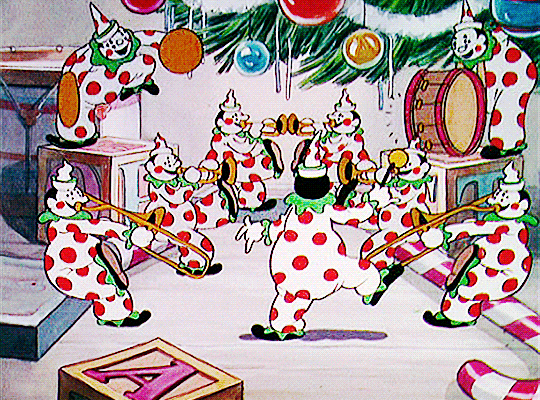
At The Christmas Ball: A Vintage Xmas Anthology
01 - At The Christmas Ball - Bessie Smith (1925)
02 - Santa Claus, Bring My Man Back To Me - Ozie Ware (1928)
03 - Papa Ain't No Santa Claus - Butterbeans & Susie (1930)
04 - It's Winter Again - Isham Jones & His Orchestra (1932)
05 - Jingle Bells - Benny Goodman & His Orchestra (1935)
06 - There's Frost On The Moon - Artie Shaw & His Strings (1936)
07 - I've Got My Love To Keep Me Warm - Mildred Bailey (1937)
08 - Christmas Morning The Rum Had Me Yawning - Lord Beginner (1939)
09 - Winter Weather - Fats Waller & His Rhythm (1941)
10 - Santa Claus Is Coming To Town - Bing Crosby & The Andrews Sisters (1943)
11 - Have Yourself A Merry Little Christmas - Judy Garland (1944)
12 - Let It Snow! Let It Snow! Let It Snow! - Connee Boswell (1945)
13 - Boogie Woogie Santa Claus - Mabel Scott (1948)
14 - Baby, It's Cold Outside - Pearl Bailey & Hot Lips Page (1949)
15 - All I Want For Christmas - Nat King Cole Trio (1949)
16 - What Are You Doing New Year's Eve? - The Orioles (1949)
17 - Midnight Sleighride - Sauter-Finegan Orchestra (1952)
18 - Silent Night - Dinah Washington (1953)
19 - White Christmas - The Drifters (1954)
20 - Rudolph The Red-Nosed Reindeer - The Cadillacs (1956)
21 - Warm December - Julie London (1956)
22 - Love Turns Winter To Spring - June Christy (1957)
23 - The Secret Of Christmas - Ella Fitzgerald (1959)
24 - The Christmas Song - Carmen McRae (1961)
25 - A Christmas Surprise - Lena Horne (1965)
26 - Santa Was Here - Lorez Alexandria (1968)
Download: flac / mp3
20 notes
·
View notes
Text







Sherlockian Wednesday Watchalongs: Made in the Gray-ed
Who needs color film when you've got stars that shine like these?
Wednesday, July 3
Sherlock Holmes (1954 TV series)
After last week's experience with the other Ron Howard, we need a dose of the real deal Ronald Howard Holmes as a palette cleanser! We'll watch two random episodes.
Wednesday, July 10
Sherlock Holmes and the Voice of Terror (1942)
Basil Rathbone's Holmes puts down the deerstalker, picks up a fedora, and joins the war effort.
Wednesday, July 17
Sherlock Holmes: The Copper Beeches (1965 TV episode)
Douglas Wilmer's Holmes takes on the strange case of Violet Hunter.
Wednesday, July 24
Sherlock Holmes (1916)
William Gillette was one of the most-influential portrayers of Sherlock Holmes. In honor of his birthday, we'll watch him star in the film version of his famous play.
Wednesday, July 31
The Sleuth (1925)
Before he became known for Laurel & Hardy, Stan Laurel starred in this Sherlock Holmes parody.
Here’s the deal: Like Sherlock Holmes? You’re welcome to join us in The Giant Chat of Sumatra’s #giantchat text channel to watch and discuss with us. Just find a copy of the episode or movie we’re watching, and come make some goofy internet friends.
Keep an eye on my #the giant chat of sumatra tag and the calendar for updates on future chat events.
#the giant chat of sumatra#sherlock#bbc sherlock#sherlock holmes#sherlock holmes 1954#the voice of terror#sherlock holmes 1965#sherlock holmes 1916#the sleuth#watchalong
11 notes
·
View notes
Text
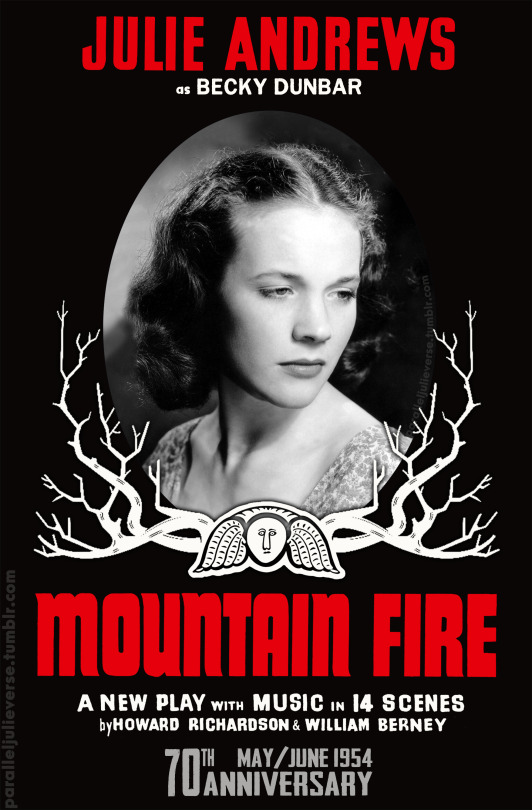
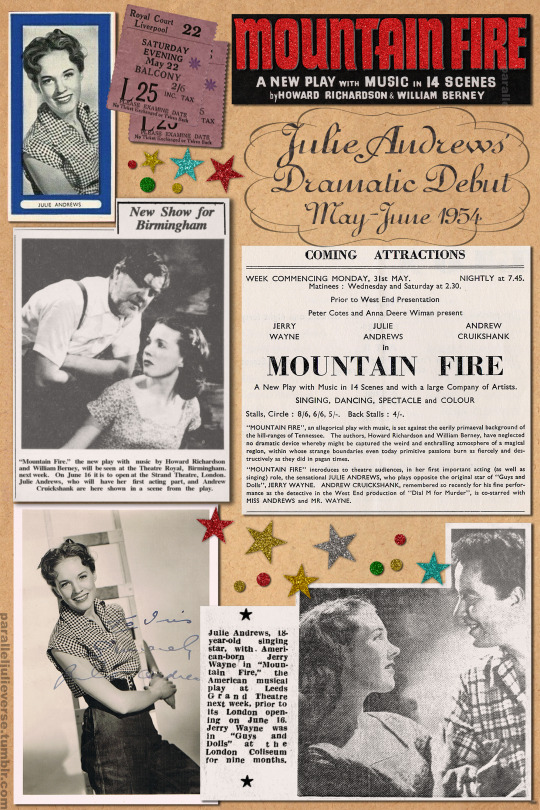
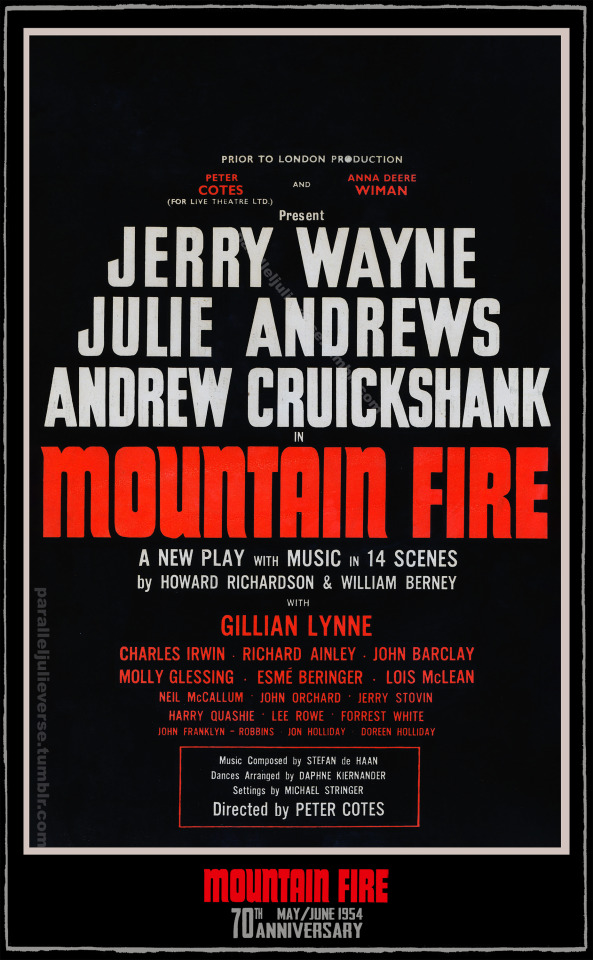
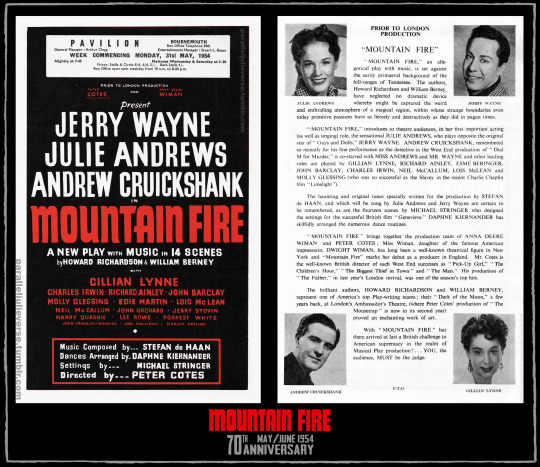
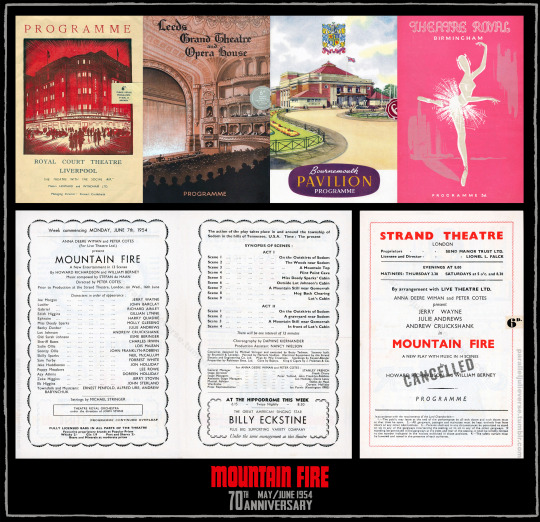



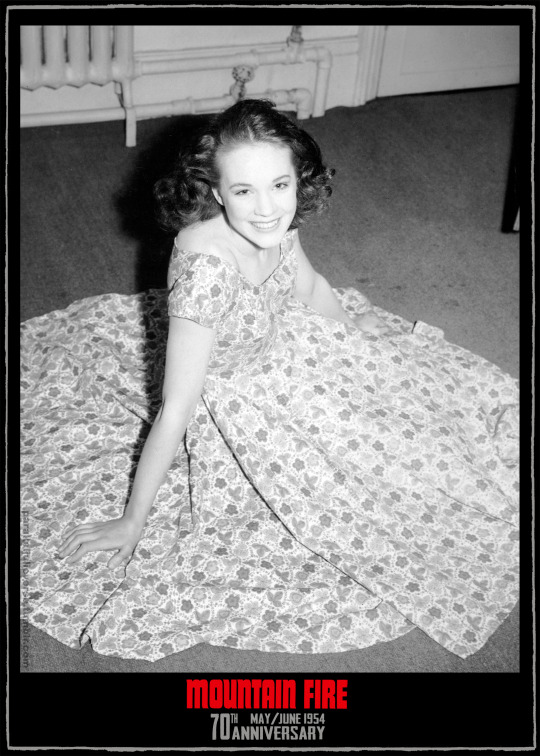

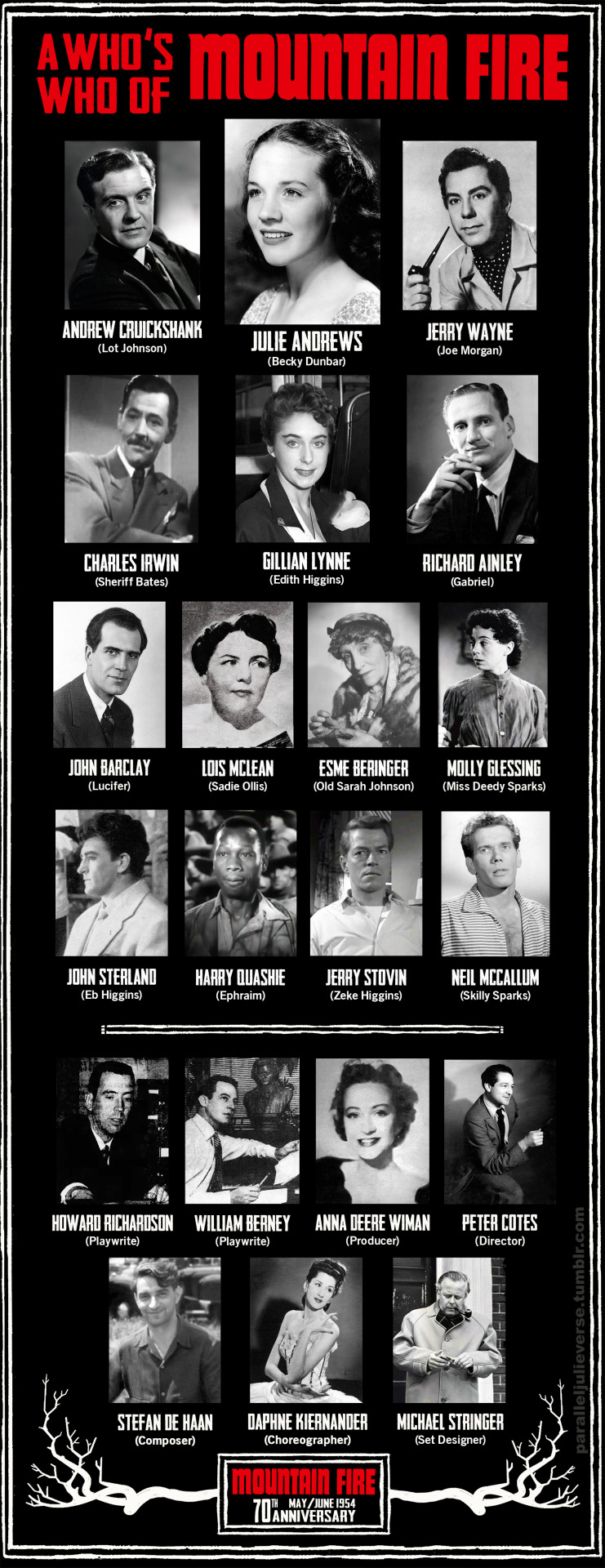
70th anniversary of Mountain Fire
Liverpool / Leeds / Bournemouth / Birmingham
30 performances
(18 May 1954 - 12 June 1954)
This month marks the 70th anniversary of a significant, if curious, milestone in the early career of Julie Andrews: her 'straight' theatrical debut in Richardson and Berney's Mountain Fire.
A notorious flop, Mountain Fire lasted barely 30 performances in a month-long provincial tryout, closing ahead of a planned West End bow. The play would likely have sunk without a trace were it not for the fact that its female lead was on the cusp of international stardom.
While the ill-fated Mountain Fire was on the road, it was formally announced that Julie Andrews had been signed to helm the Broadway cast of The Boy Friend (Chit Chat 1954, p. 8; Mackenzie 1954, p. 4). The stark contrast between the disastrous failure of Mountain Fire and the star-making success of The Boy Friend has become part of the mythology of Julie Andrews' career.
Even the Dame herself is fond of playing up the angle. "I had done one bomb in England," she recounts in a 1966 interview, "an incredible disaster...between Cinderella and The Boy Friend. I accepted a very limited engagement, thank God, and played a Southern belle from Tennessee...I can't tell you what went on. It was a disaster" (Newquist 1966, p. 141).
Four decades later in her 2008 memoirs, Julie was still cringing over the experience:
"The truth was, the play was not good, and although the company tried to make it work, we all sensed it was going to be a flop. I also knew beyond a shadow of a doubt that had the eminent London critic Kenneth Tynan seen my performance, it would have been the end of any career I hoped to have. Mercifully, Mountain Fire folded out of town" (Andrews 2008, 160).
Legitimate, at last!
Self-deprecatory humour aside, Julie actually received very good notices for her efforts in Mountain Fire. The Stage declared: "Julie Andrews scores a particularly fine dramatic success in her first serious portrayal, as the ill-starred Becky, bringing rare maturity to the difficult and exacting role" ('American folk play' 1954, p. 10). The Liverpool Echo similarly enthused: "Julie Andrews scores a personal triumph as the young girl and, in her first 'straight' role, reveals herself as accomplished an actress as she is a singer" (H.R.W. 1954, p. 5). While the Yorkshire Evening Post opined: "Julie Andrews gives a beautiful and moving performance as the luckless Becky" (Bradbury 1954, p. 8).
Though the production might not have panned out as anticipated, Mountain Fire was a strategic step in Julie's ongoing pivot from child stardom to adult performer. Much was made in show publicity about Julie’s "graduation" from juvenile entertainment to mature dramatic fare:
"Brilliant stage and film children are always a little heartbreaking. So few of them amount to anything after they have reached the colt stage...One of the most happy exceptions is Julie Andrews--the once plain little girl with buck teeth, a slight squint and pigtails who astonished us all by singing operatic numbers in a sweet, clear coloratura when she had reached the ripe age of 12...Now, Julie is to make her debut as a straight actress in a new American play to be presented here by Peter Cotes...called Mountain Fire...Cotes says: 'Julie has a wonderful role and I believe her to be a young actress with great possibilities.'...[A]s she has both singing and dancing to do in her first straight play, this might well be the chance of a lifetime for grown-up Miss Andrews" (Frank 1954, 6).
'A hill-billy Bible story'
Mountain Fire couldn't have represented a more "grown-up" change for Julie. Billed as a "new play with music in 14 scenes", it was the latest offering from rising American playwrights -- and cousins -- Howard Richardson and William Berney. The pair had scored an early success with Dark of the Moon (1945), a fantasy verse play about witchcraft, love, and social intolerance in colonial-era Appalachia. They followed with a second collaboration, Design for a Stained Glass Window (1949) about religious persecution and martyrdom (Duncan 1966, p. S-7; Fisher 2021, p. 248-49).
Mountain Fire trod similarly heavy dramatic ground with a mix of religion, Southern Gothic stylings, and social commentary. Described by one critic as "a hill-billy Bible story", the play was an allegorical retelling of the Abrahamic legend of Sodom and Gomorrah with the "cities of the plains" transposed to "rival colonies of mountain dwellers" in the backwoods of eastern Tennessee (Mackenzie 1954, p. 4).
The scriptural elements of human wickedness and divine retribution were adapted into a laundry-list of stock Southern vices: a Hatfield-McCoy style feud, moonshine, teen pregnancy, arson, murder and, even, a Ku-Klux-Klan lynching ('New American Musical' 1954, p. 12). Punctuating this cavalcade of backwoods iniquity was a series of Greek choric tableaux where Lucifer and the Archangel Gabriel, dressed in mountainfolk mufti, debate the spiritual problems of the characters on stage.
At the heart of this heady mix, Julie was cast in the "Lot's wife" role of Becky Dunbar, a winsome but headstrong teenage mountain girl described in the script as "grow'd up wild as onion weed" (Richardson and Berney, 1954, Act 1, Scene 2, n.p.). Becky finds herself pregnant after a brief dalliance with Joe Morgan, a charming but unscrupulous travelling salesman. She is torn between her passion for Joe and her moral duty to Lot Johnson, a virtuous widower who marries her because "it's the Christian thing to do" (Richardson and Berney, 1954, Act 1, Scene 5, n.p.).
Julie often jokes that "You've never heard a worse Southern accent than mine" (Newquist 1966, p. 141) -- and the script's hillbilly argot certainly would have proved a challenge to her crisp Home Counties consonants and rounded vowels. Becky's very first line, for example, is: "I ain't been gallivantin', just skimmin' rocks at Turkey Creek" (Richardson and Berney, 1954, Act 1, Scene 2, n.p.). Not exactly typical RP phraseology!
On a less challenging note, the show also featured a series of musical interludes with ritual dances and allegorical songs. Sporting titles like "Lullaby to an Unborn Child", "The World is Wide" and "Oh, It's Dark in the Grave", the musical numbers may not have been cheery toe-tapping ditties, but reviewers typically singled out Julie's singing as an all-too-rare highlight.
"Julie Andrews..prov[es] her undisputed musicianship by taking one song on high E flat, solus, and in perfect tune," marvelled one reviewer (Bradbury, 1954, p. 8). Another chimed: "We are inclined to think poorly of Becky until we realise how well she is to be played by Julie Andrews...Sodom and Gomorrah...seem to sweeten because of her presence... and she sings very pleasantly on the few occasions afforded to her" ('Midland entertainments,' 1954, p. 17).
Given the Biblical source material, the story of Mountain Fire could only end in grand tragedy. And, lo, by play's end the backcountry villages have been consumed by fire and our poor Julie is turned to salt. If naught else, the last scene of Mountain Fire certainly gave Julie a scenery-chewing finale for her straight dramatic debut:
LOT (Offstage): Remember the warning, Becky! Don't look back!
The hoot of the owl is heard.
BECKY starts up the hill. She stops, hesitates, almost looks back. Music builds. Again she goes forward, stops, almost looks back. Music continues to build. The third time she turns and does look back. Music crescendo. The lights dim, then rise again.
BECKY has become salt. She lies motionless reaching towards JOE.
Blackout
CURTAIN
(Richardson and Berney, 1954, Act 1, Scene 2, n.p.)
From Sodom, Tennessee to the Scepter'd Isle
The background saga of bringing Mountain Fire to the stage was almost as feverish as the storyline. The play began life in 1950 when Richardson and Berney completed their first working script under the original title of Sodom, Tennessee.
The play was initially optioned by Jack Segasture, a 23-year-old would-be Broadway producer who had managed Richardson and Berney's previous work, Design for a Stained Glass Window. That production proved a misfire, closing after just 8 performances, but Segasture was keen to back the playwrights for a second attempt at Broadway success (Watt, 1950, p. 47).
In the summer of 1950, Segasture mounted a series of workshops of Sodom, Tennessee at various regional Pennyslvania theatres (Talley 1950, p. VI-13). Reviewing one of these early work-in-progress performances, the critic for Variety ventured that "with some doctoring, [it] may have possibilities for Broadway, where it is headed" ('Review: Sodom Tennessee', 1950, p. 40).
In late-1950, Segasture announced that Sodom, Tennessee was set to start rehearsals the following January ahead of an anticipated New York opening in the spring ('Set Broadway", 1950, p. 26). Robert Perry was contracted to direct, with Robert Lowery and Jean Parker in discussions for the leads ('Film player,' 1951, p. 57). However, in April 1951, Segasture was suddenly drafted into the Army, and plans for the production were promptly scuttled ('Producer drafted,' 1951, p. 15C).
Over the next few years, various attempts were made to resurrect Sodom, Tennessee, but with little progress. In mid-1953, a lifeline came in the form of a pair of second generation producers: David Aldrich, son of famed producer, Richard Aldrich -- a.k.a. Mr Gertrude Lawrence to fans of STAR! -- and Anna Deere Wiman, daughter of Dwight Deere Wiman and heiress to the John Deere family fortune (Shanley, 1953, p. 10). Wiman had come into a sizeable inheritance on her father's death and she effectively bankrolled much of the production's initial $80,000 investment (Franklin, 1953, p. 9-E).
Wiman and Aldrich tapped Peter Cotes -- a British director who had scored a recent New York success with A Pin to See the Peepshow -- to take on directorial duties (Calta, 1953, p. 14). They also invited Pulitzer-prize winning composer, Lamar Stringfield, to write the musical score ('Stringfield asked,' 1953, p. 7). At one stage, the producers were allegedly in discussions with none other than Marilyn Monroe to make her Broadway debut in the role of Becky but, wisely perhaps, she declined (Winchell 1953, p. 19).
In early 1954, plans for Sodom, Tennessee underwent a dramatic change. For reasons unknown, Aldrich was suddenly out of the production team. In his place, director Peter Cotes was promoted to co-producer status with Wiman. Possibly because Cotes was British, it was decided to relocate the production across the Atlantic and launch the show in the UK ('News of the theater' 1954, p. 6).
Another factor was that production costs were lower in the UK than New York, something which would see the American Wiman remain as a London-based producer for several years (Hatwell 1957, p. 19; Wilson 1956, p. 10). Additionally, Richardson and Berney's earlier work, Dark of the Moon had enjoyed a fairly successful West End run in 1949, so the producers possibly reasoned that the new show might fare similarly well with English theatregoers (Darlington, 1949, p. 5).
Either way, Sodom, Tennessee was now set to make its world premiere in England -- though still with hopes of an eventual New York transfer ('Romantic comedy,' 1954, p. 17C).
'Not fit for the marquee of a British theatre'
Once the production team hit London, they set about preparing the play for its British bow. The first thing to go was the title.
Up until 1968, British censorship laws required all plays intended for public performance to be submitted to the Lord Chamberlain's Office for review and approval (Shellard et al, 2004). It seems the Lord Chamberlain did not approve of a play called Sodom, Tennessee, "an immoral name not fit for the marquee of a British theatre". Initially, the production team toyed with Brimstone as an alternative title, but finally settled on Mountain Fire (Talley, 1954, p. VI-5).
It was also decided that the show needed a musical overhaul. Some incidental music had been composed for earlier iterations, including piecemeal efforts by Lamar Stringfield. One or two of these pieces were retained but, for the most part, the producers opted for a new score. For this task, they contracted Stefan de Haan, a young German musician and composer who had come to study in the UK after the war and stayed on to work with various regional orchestras. De Haan not only composed a new score for Mountain Fire, including three new songs for Julie, but also signed on as music director and conductor (Bradbury 1954, p. 4).
Other key creative appointments were Michael Stringer as set designer and Daphne Kiernander as choreographer. Stringer came to the project fresh from working on the hit Rank comedy, Genevieve (1953), and a host of other film and theatre productions. He designed darkly stylised sets for all 14 scenes of the play, as well as orchestrating special effects for the final destruction sequence (Bishop 1954, p. 8). Kiernander was a classically trained ballerina who had performed as a principal in many West End shows and revues before shifting to choreography. For Mountain Fire, she created two set dances, broadly patterned on 18th century folk dances, and oversaw general staging for the songs ('Chit Chat', 1954, p. 8).
In early April 1954, Howard Richardson and William Berney arrived in London to help make revisions to the script. They also served as dialect coaches for the cast (Talley 1954, p. VI-5). During this early rehearsal period, Julie worked closely with Cotes' actress wife, Joan Miller who, as Julie relates, "tried to help me find the nuances that were needed for the part" (Andrews 2008, p. 171). Indeed, to hear Cotes tell the story, "Julie Andrews...was taught how to act by Joan Miller" and it was "Mountain Fire and Joan Miller between them [that] gave Julie the much needed groundwork..to erupt onto the Broadway stage" (Cotes 1993, p. 23). Not sure Moss Hart would agree, but anyway...
Later that month, Cotes and Miller hosted an official launch party for Mountain Fire at their South Kensington home with local theatre and high society luminaries in attendance (Candida, 1954, p. 2). The show's schedule was set with a month-long tryout starting on 17 May in Liverpool, followed by one week runs in Leeds, Bournemouth, and Birmingham. The show's London opening was scheduled for Wednesday, 16 June at the Strand Theatre, Aldwych.
In mid-April, the tour was formally announced with ticket sales opening immediately:
"On May 17 at the Royal Court, Liverpool, Peter Cotes and Anna Deere Wiman will present the world premiere of Mountain Fire by Howard Richardson and William Berney. Making her debut as a straight actress in this play will be 18-year-old Julie Andrews. Other leading roles will be played by Jerry Wayne, Andrew Cruickshank, Gillian Lynne and Charles Irwin. Music for this production has been composed by Stefan de Haan. Decor will be by Michael Stringer, and choreography Daphne Kiernander. Peter Cotes is directing, and following a short tour the play will be presented in the West End" ('Chit Chat: Mountain Fire' 1954, p. 8).
'Every night it was a new show...'
The function of an out-of-town tryout is to put the finishing touches on a show ahead of its official "big city" opening. Cast and crew get to see how the play is working with live audiences and revise things accordingly. In happy cases, the tryout is a relatively easy process of fine-tuning elements and smoothing out wrinkles.
In other cases though, the process can be far more tumultuous. Seth Rudetsky (2023) relates that New York theatre-folk popularly joke, "if Hitler were alive today, his punishment should be doing an out-of-town tryout with a show that's in trouble" (p. 152). Even Adolph might have blanched at the Mountain Fire tryout.
A sign of early trouble came days out from opening when the producers suddenly announced a 24-hour postponement of the Liverpool premiere from Tuesday 17 to Wednesday 18 May (H.W.R. 1954, p. 4). Rehearsals had revealed serious structural issues with the show and the production team needed every hour they could muster to hammer it into shape.
Worse still, the key creatives couldn't agree about the source of the problems and how to fix them. Director Cotes believed the biggest problem was the script and he wanted major rewrites. For their part, Richardson and Berney felt the musical sequences were at fault.
Jerry Wayne, who took the male lead of Joe Morgan, recalled:
"[W]e ran into trouble with the American authors. They objected to the musical numbers that had been written into their story. We opened at Liverpool on a Thursday night as a musical. Then we were told to cut out the musical numbers. On Friday night we opened at 7.30 as a straight play. With the music cut, the curtain ran down at 8.15" (Greig 1955, p. 9)
The songs were duly reinstated, but competing revisions were trialled to staging and orchestration. In her memoirs, Julie relates:
"Our director couldn't decide whether he wanted the orchestra in the pit or onstage, or no orchestra at all. This was a play, after all, so he then thought maybe one instrument, a guitar, would be enough. We tried the show a different way every night" (Andrews 2008, p. 160).
Another member of the cast, Neil McCallum, similarly recalled the snowballing desperation of the tryout tour:
"Everyone hoped it would get better, so the authors and the director got together and decided to revamp the whole show. They kept writing new scenes every day...every night it was a new show until not even the cast recognized it...Pretty soon the authors and the director weren't speaking. Two days later the authors and the backer weren't speaking. Finally, no one was speaking" (Tesky 1954, p. 6).
A comparison of scene synopses printed in programmes for Mountain Fire across its month-long tryout reveals the extent to which the production altered across performances. During its first night in Liverpool, the show was comprised of three acts and fourteen scenes. The following week in Leeds, it was still three acts but down to only ten scenes. In Bournemouth, it was back to three acts with fourteen scenes. By the time it got to Birmingham, the play was suddenly just two acts with thirteen scenes!
'Call down fire and brimstone...'
Given the panicked disorganisation that plagued the tryout, it should not surprise that reviewers took a rather dim view of Mountain Fire. Indeed, other than praise for Julie and fellow cast members, critics were mostly scathing in their assessment of the show -- with notices getting progressively more brutal as the tour continued:
The Liverpool Echo: "When the new play, Mountain Fire, opened with a dissertation by the Angel Gabriel and Lucifer on the delights of being good and bad, it was obvious that this world premiere at the Court Theatre last night would provide something unusual -- and so it proved. But whether this modern parable of Lot's wife will meet with general approval is problematical, because in attempting to lighten high drama with a smattering of musical numbers plus one or two dances, the American authors, Howard Richardson and William Berney, have achieved a curious hotch-potch which is neither one thing nor the other" (H.W.R. 1954, p. 5).
The Stage: "The Liverpool audience could be forgiven for their puzzlement over this provocative, somewhat bewildering, production, which rather inclines to fall between the two stools of allegorical drama and musical entertainment, lacking the virtue of anything in the way of a hit tune" ('American folk play' 1954, p. 10).
The Yorkshire Observer: "Symbolism on the stage is meat only for those who can stomach such food and, it is difficult to live on meat alone. So it might be that Mountain Fire which, in the second week of its production, is now at the Leeds Grand Theatre, might easily die as quickly as the symbolical fire it portrays, no matter how brilliant the cast" ('Symbolistic musical' 1954, p. 6).
Birmingham Daily Gazette: "Mountain Fire, a somewhat disastrous item which arrived at the Theatre Royal, Birmingham, last night, is an odd mix of sex and religiosity which, I fear, will prove seriously offensive to many...The whole thing is meant to be an allegory, with a deep application to our atom-bomb age. But it is all expressed in such appallingly banal language that it leaves one convinced that the underlying thought must be equally banal...One can only have sympathy for the very talented performers who struggle with this material" (Mackenzie 1954, p. 4).
Evening Despatch: "Howard Richardson and William Berney are evidently generous-minded men. In their play, Mountain Fire, at Birmingham Theatre Royal, they include murder, two burials, the Ku Klux Klan..., Lucifer, the Archangel Gabriel, religion and, of course, sex...Directed by Peter Cotes, this is a bewildering story of sin among the backwoodsmen of Tennessee...Somewhere in all this there may be a moral. At first I found it difficult to keep up. Eventually I gave up trying" (Holbrook 1954, p. 6).
The Birmingham Mail: "The conscientious critic of the drama will find that there are certain troublesome questions which are created in the mind by Mountain Fire, the new play by Howard Richardson and William Berney. How, for instance, did it come about that it reached the stage of the Theatre Royal at all and how is it that next week it is to occupy the stage of a West End theatre, however short its tenure there may be? What is more to the immediate point is how one ought...to deal by way of notice with so poor an offering. Ought one to call down fire and brimstone or, refusing to treat the piece seriously, as did many of the audience last night, rend it with ridicule?" (C.L.W 1954, p. 4).
'Mountain Collapses'
With this level of bad press, the prognosis for Mountain Fire was bleak. Ticket sales were sluggish and the cast often found themselves playing to half empty houses. Even worse, audience members were increasingly audible with their displeasure. As Neil McCallum relates:
"One of the lines at the last of the play is 'Lot, don't turn back.' Came a voice from the audience, 'I don't know about turning back -- I want my bloody money back.' In the interval, the ushers were mingling with the audience saying, in ringing tones, 'isn't it terrible...don't you wish you hadn't come?'" (Tesky 1954, p. 6).
By the final week in Birmingham, the writing was on the wall and producers decided to avoid what would surely have been a critical and commercial bloodbath in London. On Thursday 10 June, barely 5 days before the show was scheduled to open at the Strand, Wiman and Cotes issued a joint statement saying they were cancelling the West End premiere of Mountain Fire:
"In view of the inadequate public response during the tour of the play, it would be unfair to the authors and the actors and other members of the production that it should open in London, at least without substantial variations" ('Play is off', 1954, p. 3).
The decision to cancel a major production so close to its premiere was not without precedent, but it was sufficiently rare to garner widespread press attention, generating a slew of punning headlines. "London douses 'Mountain Fire'," trumpeted the New York Times (1854, p. 13). "Mountain Collapses" blared the Kensington News ('Theatre Notes' 1954, p. 2). And "Mountain Fire Out!" declared the Daily Post (Daily Post London Reporter 1954, p. 1)
Mountain Fire had two further performances to complete its Birmingham run, and once the curtain came down on Saturday night of 12 June, the production staggered to its sorry close. Richardson and Berney had already taken early departure back to the US, unable to watch the show's final demise. Cotes similarly retreated to London and refused for many years to even discuss the play.
Producer Anna Wiman insisted on staying to the very end. "No cast has been more loyal than this one," she declared, valiantly talking up a future for the show. "[I]t's not the end...I believe in this play and I am determined that it shall have a successful run in London. It will have a new director and a new atmosphere" (Mercury Staff Reporter 1954, p. 1.) The following March, a 'news in brief' snippet claimed Wiman was "still trying to lease or buy a theatre, with the Bill Berney-Howard Richardson play, Mountain Fire, as first on her production schedule" (Walker 1955, p. 61). But a year later, she would admit defeat, having lost the full extent of her £40,000 investment in the show (Wilson 1956, p. 10).
In the end, it wasn't just the UK production of Mountain Fire that sank. The play itself effectively vanished with little appreciable after-life. The script was never published, nor is there any record of it being registered with a theatrical licensing company. Only one further staging of the show ever seems to have taken place: a brief five performance run in May 1962, under the play's original title of Sodom, Tennessee, at the Little Theatre of the West Side YMCA in Manhattan ('Premiere,' 1962, p. 14). Billed as the show's "New York premiere", it didn't attract much attention and there are no published reviews. After that, the play's trail comes to a complete halt.
If it weren't for the show's status as a footnote to the career of Julie Andrews, Mountain Fire would likely have been completely lost to history. Even at the time of its cancellation, reports were already framing Mountain Fire as a blip on the way to Broadway success for Julie:
"Julie may have missed a West End appearance, but she is to be compensated by a Broadway lead in The Boy Friend when the show goes to New York in the autumn" ('Theatre Notes' 1954, p. 2).
Within a year or two, Julie's stardom was the principal frame of reference for any mention of Mountain Fire. It even became something of a boast for those behind the ill-fated production .
In 1956, when Julie was riding high on the success of My Fair Lady, an Alabama newspaper crowed that local playwright William Berney "discovered Julie Andrews [when] he was in London...casting his play Mountain Fire...Julie 'was it' so far as Berney was concerned, and a happy unknown made her bow" (Caldwell 1956, p. E-1). Not to be outdone, Howard Richardson was also soon talking up how his "plays have sent many actors and actresses on their way to fame including...Julie Andrews...who played one of her first roles in Richardson's Mountain Fire during its London [sic] run" ('New York playwright' 1959, p. 14).
All of which only proves the popular adage that, where failure is an orphan, success has many fathers!
____________________________
Who's Who of Mountain Fire
While Julie was undoubtedly the biggest star associated with Mountain Fire, the show included a roster of established and upcoming theatre talents, many of whom went on to bigger and better things:
Principals
Jerry Wayne as Joe Morgan (1919-1996): Born in Buffalo, New York in 1919, Wayne was a recording vocalist of some note who even hosted his own CBS radio show in the 1940s. He came to London in 1953 to play the lead role of Sky Masterson in the West End production of Guys and Dolls, marking the start of a British career. He appeared in the 1955 film musical, As Long as They're Happy and made several TV appearances in the 1960s. In 1967, Wayne married the novelist Doreen Juggler and graduated to a second career as a theatre and recording producer. Collaborating with his son Jeff, Wayne had notable success with the 1978 concept album, Jeff Wayne's Musical Version of The War of the Worlds. Wayne passed away in Hertfordshire in 1996 ( 'Jeff Wayne' 1996, p. 24).
Andrew Cruickshank as Lot Johnson (1908-1988): Born in Aberdeenshire, Cruickshank initially pursued civil engineering before turning to the stage. He made his professional debut in Shakespeare repertory and joined the Old Vic in 1937, playing notable roles such as Banquo in Macbeth, opposite Olivier. During WWII, he served in the Royal Welsh Fusiliers, earning an MBE. His varied career included significant roles in the West End production of Inherit the Wind (1960) and the National Theatre's Strife (1963). His best know role came courtesy of television as Dr. Cameron in the popular BBC series, Dr. Finlay's Casebook (1962-71). In later life, Cruickshank wrote a number of plays, and was president of the Edinburgh Fringe Society. He died in 1988 ('Andrew Cruickshank' 1988, p. 310).
Charles Irwin as Sheriff Bates (1908-1984): Born in 1908 in Leeds, Irwin began his career in variety shows and became a comedian and vocalist on radio in the 1930s. He worked extensively in regional theatre and appeared as a character actor in films such as The Third Man (1949), A Tale of Five Women (1951), and Mystery Junction (1951). In later decades, he transitioned to television, appearing in popular series like Danger Man (1960), International Detective (1961), and The Saint (1962). Irwin passed away in November 1984 in Salisbury.
Gillian Lynne as Edith Higgins (1926-2018): An influential figure in British theatre and dance, Lynne was born in 1926 in Bromley, Kent. She began her career as a ballerina, dancing with Sadler's Wells, the English National Opera, and the Royal Shakespeare Company. Lynne subsequently moved into choreography, working on many successful West End musicals. She was best known for her collaborations with Andrew Lloyd Webber, where her choreography was instrumental to the success of shows such as Cats and The Phantom of the Opera. In recognition of her contributions to dance and musical theatre, Lynne was made a Dame Commander in 2014. She passed away in 2018 at the age of 92 (Dex 2018, p. A13).
Richard Ainley as Gabriel (1910-1967): Ainley was born in Middlesex in 1910, the son of famed Shakespearean actor Henry Ainley. He debuted on stage with Martin Harvey's company, before going on to work with the Old Vic and Sadler's Wells. His first film role was in As You Like It (1936), followed by notable roles in The Tempest (1939) and Above Suspicion (1941). Severely wounded in WWII, Ainley had to abandon his film career and could only continue with occasional stage roles. Later, he focused on broadcasting and adjudication, briefly leading the Bristol Old Vic Theatre School in the early 1960s. He passed away in 1967 at age 56 (Coe 1967, p. 23).
John Barclay as Lucifer (1892-1978): Barclay was born in 1892 in Bletchingly, Surrey. A tall man with a booming basso baritone, he trained as an opera singer and toured widely with various companies, including D'Oyly Carte. He appeared in several films, including The Mikado (1939) and Dr. Jekyll and Mr. Hyde (1941). In the late 1950s, Barclay moved to the US, where he pursued a late career playing strong and menacing character parts in film and TV. He passed away in 1978 at the age of 86.
Supporting Players
Molly Glessing as Miss Deedy Sparks (1910-1995): Midlands-born Glessing began her career in variety in the 1930s as a singer, dancer, and comedienne. She rose through the ranks to become a featured player in comedies and pantomimes. During the war, she gained popularity as a radio player and ENSA entertainer. After marrying a US serviceman, she relocated to California. Dividing her time between the US and the UK, Glessing continued to work in stage productions and amassed numerous character credits in films such as Charlie Chaplin's Limelight (1952), and TV shows, including The Quatermass Xperiment (1955) and Alfred Hitchcock Presents (1955-1962) ('Glessing" 1996, p. 33).
Lois McLean as Sadie Ollis (1927-2013): Canadian-born McLean studied drama at the University of Alberta and performed for several years with the Everyman Theatre Company in Vancouver. In 1950, she moved to the UK where she continued to perform, while studying theatre production with the Glasgow Citizen's theatre. In 1953, McLean started work as a manager for Peter Cotes and he cast her in various productions including Mountain Fire (Narraway 1954, p. 34). The pair also collaborated on a book, A Handbook of British Amateur Theatre. In the late-50s, she wed Indian-born lawyer, Birendra Jha and returned to Canada to start a family. McLean continued to perform and teach drama in Edmonton.
Esme Beringer as Old Sarah Johnson (1875-1972): Born in London to artist parents, Esme Beringer was a celebrated stage actress who made her professional debut in 1888. Known for her athletic physique and swordsmanship, she excelled in breeches roles, including playing Romeo, Little Lord Fauntleroy and The Prince and the Pauper. An enthusiastic fencer, she taught classes during WWI and starred in Shakespearean roles post-war. In later life, Beringer moved into character parts both on stage and in film. She died in 1972 at the grand age of 96 ('Esme Beringer' 1972, p. 16).
Neil McCallum as Skilly Sparks: (1929-1976) Born in Canada in 1929, McCallum moved to the UK to study at the Guildhall School of Music and Drama. Following graduation he appeared in a number of stage shows, scoring his greatest theatrical success in 1956 with the West End production of The Rainmaker opposite Sam Wanamaker. In the 1960s, McCallum became a familiar face on British television in series like The Saint (1963-64) and Department S (1969), as well as voicing characters on Thunderbirds Are Go (1966). Transitioning behind the scenes, McCallum became a scriptwriter and producer of some note, helming a number of TV series for the BBC before his untimely death from a cerebral hemorrhage in 1976, aged only 46 ('Neil McCallum', 1976, p. 11). As detailed by Julie in the first volume of her memoirs, she and McCallum embarked on a serious, if short-lived, romance during the production of Mountain Fire (Andrews, 2008, p. 161ff).
Jerry Stovin as Zeke Higgins (1922-2005): Born in Unity, Saskatchewan in 1922, Jerry Stovin served in the Canadian Army where he got the acting bug performing in military entertainments. Following the war, he went to Carnegie Tech to study drama, and moved to Britain in 1955. There he carved out a successful career in radio, television, and film, often playing American roles. He passed away in 1978 at the age of 86 (Peacock 1975, p. 7).
Harry Quashie as Ephraim (1914-1982): Born in Ghana, Quashie originally came to the UK to study law in 1939. He started to act in university theatricals and soon gave up his studies to pursue an acting career. He performed in a wide range of stage, radio and TV dramas and was a founding member of the Negro Theatre Company which helped pave the way for Black theatre artists in Britain. In the 50s, Quashie had character parts in several big screen features notably, Simba (1955), Safari (1956), and, The Passionate Summer (1958) ('Gave up law' 1947, p. 1; Bourne 2021).
John Sterland as Eb Higgins (1927-2017): Another Canadian actor, Sterland was born in Winnipeg to English parents. He came to the UK on a RADA scholarship, before joining the West of England Theatre Company. In a long career, Sterland racked up scores of stage and screen credits including A Countess from Hong Kong (1967), Performance (1970), Ragtime (1981), Bad Medicine (1985), Batman (1989), and The Tudors (2007). Married for many years to fellow actor, June Bailey, Sterland passed in 2017 ('John Sterland' 2017, p. 12).
Creatives
Howard Richardson (1917-1984): Born in Spartanburg, South Carolina, Richardson graduated from the University of North Carolina in 1938 and earned his M.A. in drama in 1940. After serving in the Army, Richardson co-wrote Dark of the Moon with cousin and frequent collaborator, William Berney. The play opened on Broadway in 1945, running for 318 performances. Despite frequent efforts, both in collaboration with Berney and as an individual playwright, Richardson would never match this initial success. In 1960, he earned a doctorate in 1960 and embarked on a career as a drama professor, working at various colleges throughout the US. He passed away in 1984 ('Howard Richardson', 1985, p. 34).
William Berney (1920-1961): Born in Birmingham, Alabama, Berney graduated from the University of Alabama, where he was active in drama. He later attended graduate school at the University of Iowa, where he started writing plays with Richardson. After graduation, Berney worked in advertising in New York, while pursuing his scriptwriting career on the side. During this period, he co-wrote several plays with Richardson, including Design for a Stained Glass Window (1950) and Protective Custody (1956). Berney moved to California around 1960 to write for television, but sadly passed away in Los Angeles in 1961 after a brief illness, aged 40 ('William Berney' 1961, p. 23) .
Peter Cotes (1912-1998): A theatrical polymath, Cotes -- who was born as Sydney Boulting in Maidenhead, Berkshire -- was part of a noted artistic family. His parents ran a theatre company and his brothers John and Roy Boulting became important filmmakers in British cinema. Initially an actor, Cotes shifted his focus to theatre production and directed the original production of The Mousetrap, the world's longest-running play. Other notable successes as director included the West End productions of The Children's Hour (1951) and A Pin to See the Peepshow (1952), and, in film, The Right Person (1955) and The Young and the Guilty (1958). In later years, Cotes wrote books and helmed a number of theatre companies. He passed away in 1998, at the age of 86 ('Peter Cotes' 1998, p. 35).
Anna Deere Wiman (1920-1963): Born in Illinois, Wiman was the daughter of successful theatre producer Dwight Deere Wiman, and heir to the John Deere family fortune. Educated by private tutors, she trained as a ballerina in Paris until a cycling accident ended her dance career. She then shifted to theatre management, initially working under her father. After his sudden death, she inherited a fortune, allowing her to become a self-funded theatre producer. Moving to London in 1954 with Mountain Fire, Wiman remained in the UK where she produced several West End productions, including The Reluctant Debutante (1955), Dear Delinquent (1957), and The Grass is Greener (1958). Despite her professional successes, Wiman struggled with alcoholism. She tragically died in 1963 at her holiday home in Bermuda from a fall down the stairs while under the influence. She was only 43 years old. ('Obituary: Anna Deere Wiman' 1963, p. 27.)
Stefan de Haan (1921-2010): Born in Darmstadt, Germany, de Haan was a gifted musician who trained in Berlin and Florence, before coming to the UK to study composition at the Royal College of Music. Following graduation, he initially gained prominence as a bassoonist, performing with various ensembles and orchestras. His compositional work includes a range of chamber music and orchestral pieces, often highlighting his expertise with woodwind and brass. His influence extended into music education, where his works are still performed and studied today. De Haan passed away in 2010, aged 89 (Bradbury 1954; 'Stefan de Haan' 2024).
Daphne Kiernander (1921-1998) Born in 1921, in East Preston, West Sussex, Kiernander was an accomplished dancer who rose to fame performing in various West End reviews and musicals such as Bobby Get Your Gun (1938), Let's Face It (1942), and Piccadilly Hayride (1946). She moved into choreography working on a number of stage and TV productions, including Such Is Life (1950) and Puzzle Corner (1953) for the BBC, and the Old Vic's 1955 production of The Taming of the Shrew. In the 1960s, Kiernander retired from dance to marry and start a new career in business and marketing (Powell 1962).
Michael Stringer (1924-2004) One of Britain's most successful film art directors, Stringer developed a passion for cinema early on. After serving as a RAF pilot in WWII, he trained with Norman Arnold at Rank Studios. There he scored notable success with one of his first independent assignments, Genevieve (1953), and followed it up with other popular Rank titles like An Alligator Named Daisy (1955) and Windom's Way (1957). His success in Britain led to international offers, working on big productions such as The Sundowners (1960), In Search of the Castaways (1962), and A Shot in the Dark (1964). Stringer went on to a distinguished Hollywood and UK career, bringing his talents to a long and diverse list of films, including Fiddler on the Roof (1971), which earned him an Oscar nomination, The Greek Tycoon (1978), The Awakening (1980), The Mirror Crack'd (1980), and The Jigsaw Man (1983). Stringer passed away in 2004. (Eyles 2004, p. 43).
Sources:
'American folk play: Mountain Fire bewilders.' The Stage. 20 May, p. 10.
'Andrew Cruickshank.' (1988). The Stage. 26 May, p. 10
Andrews, J. (2008). Home: A memoir of my early years. London: Weidenfeld and Nicolson.
Bishoff, T. (1963). 'Playwright Richardson turns professor.' The Eugene Register-Guard. 6 October, p. 2E.
Bishop, G.W. (1954). 'Theatre Notes: an American play to start in London'. The Daily Telegraph & Morning Post. 3 May, p. 8.
Bourne, S. (2021). Deep are the roots: Trailblazers who changed Black British theatre. History Books.
Bradbury, E. (1954). 'Music Notes: Former YSO player as a theatre composer.' The Yorkshire Post and Leeds Mercury. 22 May, p. 4
Bradbury, E. (1954). 'Mountain Fire at the Grand Theatre.' Yorkshire Evening Post. 28 May, p. 8.
Caldwell, L.M. (1956). 'Julie Andrews: Birmingham man discovered "my fair lady".' The Birmingham News. 28 October, p. E-1.
Calta, L. (1953). ‘Cotes will direct “Sodom, Tennessee”: drama based on Biblical story to open on Broadway early in February -- 26 in cast.’ New York Times. 7 November, p. 14.
Candida. (1954). Theatre Notes: Peter Cotes and party. The Kensington News and West London Times. 23 April, p. 2.
'Chit Chat: Mountain Fire'. (1954). The Stage. 22 April, p. 8.
'Chit Chat'. (1954). The Stage. 20 May, p. 8.
C.L.W. (1954). 'Modern morality play.' The Birmingham Mail. 8 June, p. 4.
Coe, J. (1967). 'Obituary: Mr. Richard Ainley." Evening Post. 23 May, p. 23.
Cotes, P. (1993). Thinking aloud: Fragments of autobiography. Peter Owen Publishers.
Daily Post London Reporter. (1954). 'Mountain Fire out'. Liverpool Daily Post. 11 June, p. 1
Darlington, D.A. (1949). 'First Night: A triumph of production, play about witches.' Daily Telegraph. 10 March, p. 5.
Dex, R. (2018). 'Cats choreographer Gillian Lynne dies at 92.' Evening Standard. 2 July: p. A13.
'Drake in Village'. (1952). Daily News. 10 November, p. 17C.
Duncan, R. (1966). 'They know the old-time religion.' Independent Star-News. 20 February, p. S-7.
'Esme Beringer.' (1972). The Stage. 6 April, p. 16.
Eyles, A. (2004). 'Obituary: Michael Stringer.' The Independent. 2 April, p. 43.
'Film player gets lead with Parker.' 1951. Daily News. 14 February, p. 57.
Fisher, J. (2021). Historical dictionary of contemporary American theater. Rowman & Littlefield Publishers.
Frank, E. (1954). 'Julie Andrews graduates.' News Chronicle. 15 April, p. 6.
Franklin, R. (1953). 'On Broadway.' Miami Daily News. 19 July, p. 9-E.
'Gave up law for stage.' (1947). Evening Telegraph. 13 October, p. 1.
'Glessing, Molly". (1996). The Spotlight. January, p. 33.
Greig, R. (1955). 'Mr. Wayne will not rush this script.' Evening Standard. 22 June, p. 9.
Hatwell, D. (1957). 'Anna becomes a powerful force in British theatre.' Evening Post. 12 December, p. 19.
Holbrook, N. (1954). 'The devil gets good parts.' Evening Despatch. 8 June, p. 6.
'Howard Richardson is dead; co-author of "Dark of Moon".' (1985). The New York Times. 1 January, p. 34.
H.W.R. (1954). 'And on the stage.' The Liverpool Echo. 7 May, p. 4.
H.W.R. (1954). 'Mountain Fire: world premiere in Liverpool' The Liverpool Echo. 19 May, p. 5.
'Jeff Wayne'. (1996). The Stage. 26 September, p. 24.
'John Sterland.' (2017). Wandsworth Times. 30 December, p. 12.
'London Douses "Mountain Fire'". (1954). New York Times. 12 June, p. 13.
Mackenzie, K. (1954). 'Show News: She's on her way to Broadway.' Birmingham Daily Gazette. 4 June, p. 4.
Mackenzie, K. (1954). 'A hill-billy Bible story.' Birmingham Daily Gazette. 8 June, p. 4.
Mercury Staff Reporter. (1954). 'Miss Wiman admits a failure.' The Sunday Mercury. 13 June, p. 1.
'Midland entertainments: Mountain Fire.' (1954). Birmingham Daily Post, 8 June, p. 17.
Narraway, M. (1954). 'Actress is happy again.' The Vancouver Province. 27 March, p. 33.
'Neil McCallum.' (1976). The Stage and Television Today. 29 April, p. 11.
'New American musical at Theatre Royal.' (1954). The Birmingham Post. 4 June, p. 4.
Newquist, R. (1966). 'Julie Andrews: An overnight success -- after 22 years.' McCalls. March, pp. 83, 140-43.
'New York playwright visits town.' (1959). Johnson City Press-Chronicle. 15 July, p. B-4.
'News of the theater.' (1954). Brooklyn Eagle. 16 March, p. 6.
'Obituary: Anna Deere Wiman.' (1963). The Stage. 28 March, p. 27.
Peacock, B. (1975). 'Jerry Stovin is busy.' The Leader-Post. 18 July, p. 7.
'Peter Cotes, 86, producer and director of 'Mousetrap'." (1998). The New York Times. 18 November, p. 35.
'Play is off: inadequate support during tour.' (1954). Daily Mail. 11 June, p. 3.
Powell, E. (1962). 'She turns from show business to shops.' The Liverpool Echo and Evening Express. 30 March, p. 18.
'Premiere of "Sodom" Friday. (1962). New York Times. May 12, p. 14.
'Producer drafted, 2 plays in doubt.' (1951). Daily News. 28 March, p. 15C.
'Review: Sodom Tennessee, Guthsville, Pa. Aug. 29.' (1950). In Beckhard, R. & Effrat, J. (Eds). Blueprint for summer theatre: 1951 supplement. John Richard Press, pp. 40-41
Richardson, H. & Berney, W. (1954). Sodom, Tennessee: A play in three acts. British Library, Lord Chamberlain’s Collection of Plays 1954/37.
'Romantic comedy set for October.' (1954). Daily News. 12 March. p. 17C.
Rudetsky, S. (2023). Musical theatre for dummies. John Wiley & Sons.
'Set Broadway showing of "Sodom, Tennessee".' The Chattanooga Times. 19 November, p. 26.
Shanley, J.P. (1953). 'New team follows in fathers' steps: David Aldrich, Anna Wiman to offer "Sodom, Tennessee" as first play in Fall.' New York Times. 3 July, p. 10.
Shellard, D., Nicholson, S., & Handley, M. (2004). The Lord Chamberlain regrets : a history of British theatre censorship. British Library.
'Stefan de Haan'. (2024). Musicalics: The classical composers database. [Website].
'Stringfield asked to pen music for "Sodom, Tennessee".' (1953). The Knoxville News-Sentinel. 4 June, p. 7.
'Symbolistic musical at Leeds Grand.' (1954). The Yorkshire Observer. 26 May, p. 6.
Talley, R. (1950). 'An imaginary Tennessee won is site for "wicked" new play.' The Commercial Appeal. 8 October, p. VI-13.
Talley, R. (1954). 'British actors must learn how Tennessee hillbilly talks.' The Commercial Appeal. 18 April, p. VI-5.
Testy, H. (1954). 'New twist to success story: Neil McCallum on ladder to acting career.' The Saskatoon Star-Phoenix. 11 August, pp. 3, 6.
'Theatre Notes: Mountain Collapses.' (1954). The Kensington News and West London Times. 18 June, p. 2.
Watt, D. (1950). 'Ailing Harrison can't stage play.' Daily News. 7 February, p. 47.
'William Berney, 40, Coast playwright.' (1961). The New York Times. 25 November, p. 23.
Wilson, C. (1956). 'Now Miss Wiman is on "The Ball"." Daily Mail. 20 April, p. 10.
Winchell, W. (1953). 'The Main Stem Lights: Marilyn rejects role.' The Pittsburg Sun-Telegraph. 8 December, p. 19.
©2024, Brett Farmer. All rights reserved.
10 notes
·
View notes
Text
Countdown to Halloween 2023, Ranked
43. Swamp Thing (1982)
42. Curse of Bigfoot (1975)
41. The Haunting (1999)
40. Orca (1977)
39. Teenagers Battle The Thing (1958)
38. The Beast (1975)
37. Don't Go in The House (1979)
36. Countess Dracula (1971)
35. Hillbillys in a Haunted House (1967)
34. Beware! The Blob (1972)
33. Alien Space Avenger (1989)
32. Baby Blood (1990)
31. Shriek of The Mutilated (1974)
30. The Mutations (1974)
29. Phase IV (1974)
28. Curse of The Faceless Man (1958)
27. The Sadist (1963)
26. Jennifer (1978)
25. The Wasp Woman (1959)
24. Noroi: The Curse (2005)
23. Girls Nite Out (1982)
22. The Monster of Piedras Blancas (1959)
21. The Cat and The Canary (1927)
20. Tell Your Children (Reefer Madness, 1936)
19. The Company of Wolves (1984)
18. It's Alive (1974)
17. The Wolf House (2018)
16. Michael Jackson's Halloween (2017)
15. The Girl Who Knew Too Much (1963)
14. The Omega Man (1971)
13. Gamera: Rebirth (2023)
12. Student Bodies (1981)
11. Night Caller From Outer Space (1965)
10. Inhumanoids (episodes 1 - 5, 1986)
9. Blind Woman's Curse (1970)
8. Maniac (1980)
7. The Child (1977)
6. Zombie 3 (1988)
5. Return of The Living Dead (1985)
4. Spider Baby (1967)
3. Basket Case (1982)
2. Messiah of Evil (1973)
Godzilla (1954)
Woof. Okay. This has been a mostly disappointing viewing experience.
Critical difference between this year's countdown and the past two is that now that I have stable employment, there is far less time to be watching horror films. I normally begin the countdown in September but we started in July of this year and still barely managed to crack 40, with my original goal being a full 100 this year. Timing. As such a lot of my plans and possible viewings were cut short and compared to last year specifically we fell back on a lot of "seen it already" at least for the top of the list.
This year's batch of viewings were largely blah, but a step up from the shitshow I put myself through last year (watching nearly every Texas Chainsaw sequel does things to a person). As such it'll be difficult to conjure up words for a decent chunk of these mostly because yes, these movies exist, I watched them, I would not recommend that you yourself watch them. That is all. If I write briefly on a given film that's not necessarily an indictment of its quality as there a decent number of these that I saw and enjoyed it's just their impact might be a bit fleeting. You will know which ones I actively disliked. I mostly just want to write about the top five or so but I will play fair.
Our grand loser this year is Swamp Thing, the DC Comics adaptation by Wes Craven. I watched this pretty much entirely because I finally got the Alan Moore Swamp Thing run in paperback this year after quite some time of having it on my to-buy list. Longtime Rachael/Ray/Ratchet fans may recall me reading it in early 2019 alongside [REDACTED]. Still one of the best Moore comics, and a second volume of Swamp Thing wouldn't have been possible without the success of this film. For context I did read the early Swampies by Len Wein and Bernie Wrightson and my general reaction to those was a'ight but there was definitely material for a serviceable film adaptation there. This is not that serviceable film adaptation. I'm not hung up on details like how Abigail has no connection to Arcane now despite being his niece in the comics, but this film is just kind of painful in how relatively unambitious it is which is saying something for Swamp Thing sword fighting another human mutation at the end of this. It's just silly and stupid and not scary or awe inspiring or anything, the Swamp Thing suit sucks, the action sucks, any sense of pathos is not there or gone, it stretches for 30 minutes too long like it's a padded TV pilot, the only highlight is being able to see Adrienne Barbeau's breasts. Fuck this it's a miserable experience to sit through. My mistake for watching a Wes Craven film that doesn't have "Scream" in the title.
Our next shitter is the two-for-one abomination that is Teenagers Battle The Thing (1958) and Curse of Bigfoot (1975); these are the same movie except Curse of Bigfoot has a 25 minute opening scene framing device that is bizarre given that "The Thing" of the original film is a Native American mummy of some sort unearthed by a group of white high school students. It's the rare personal pet project movie made for fun by some locals but the only highlights are the occasional kill scene, Curse of Bigfoot ranks lower just for making me sit through it longer. Blah.
Speedrunning through a bunch of these because theyre all varying degrees of bad and I don't want to spend any longer writing about these than you probably do reading about them: The Haunting is awful and I don't even super care for the original film so adding shitty CGI monsters and a moral lesson of "it's about family!" doesn't help. Orca is a shitty Jaws cash-in that's like a reverse Moby Dick where the sea animal hunts down the human, nice finale where the orca and shitty poacher guy are fighting it out in the Arctic but otherwise avoid. Don't Go in The House is a mysoginistic torture porn movie that really doesn't sell the "seemingly normal guy is a closet nutcase" thing even though movies made before and after have done it well (see Maniac several paragraphs below). The Beast is advertised as this really scandalous porno film but most of it is French aristocrats sitting around in stuffy rooms arguing about real estate. I think I only watched Countess Dracula for its inclusion in the "if this is her vibe I would fucking cum" meme and it's barely worth bringing up at all. Hillbillys in a Haunted House has an absolutely lovely Tennessee country soundtrack that I wish I could listen to without having to watch the actual movie which is devoid of both scares and laughs. Beware! The Blob gives off the feeling of sitting at a funeral for a family member that was just distant enough for you to be aware of them but not actually be upset but it's still a funeral so it's not like you're smiling, stick with the 1988 Blob film. Alien Space Avenger has some decent gore effects but that's all I can recall from it. Shriek of The Mutilated has one of the best titles for an otherwise uninspired yeti movie that has a needless third act twist about it being a cover for a cult and blah blah blah fuck you. Baby Blood has an alien mutant whatever crawl up a woman's vagina into her womb and she has to eat people to feed it and yeah I'm actually struggling to remember what happens here. The Mutations has a scene where a guy cuts into a tree and it bleeds, I think he's played by Donald Pleasance. Yeah, it's like Freaks except it plays to the freak show straight so you get to laugh at all the outcasts of society, no thank you.
Some odds and ends that I'd say are decent-to-pretty-good: Phase IV has some footage of ants and synth music. All you need is some footage of ants and synth music. Curse of The Faceless Man employs a rarely seen archetype of the living statue monster, it's cute. The Sadist is another starring vehicle for Arch Hall Jr., who was also the star of last Halloween's Eegah! (1962), though this film is a bold trendsetter for the 1960's with Hall being a unhinged killer holding people for ransom until they can fix his car and he can make a getaway. The film lives and dies by Hall's performance and it's mostly the latter until we get to an absolutely superb final act with him hunting down his remaining victims, it makes the whole film worth seeing. Jennifer is an oddball that plays out mostly like a character drama ("It wasn't my fault Daddy it was that stupid hillbilly bitch Jennifer") that suddenly remembers that it's supposed to be a cash-in of Carrie (1976) in the last 20 minutes and cue our titular character being able to summon and control snakes to send after her tormentors. Girls Nite Out is a plodding meandering slasher that's oddly hypnotizing considering so much of it takes place in pitch-black night and the killer is wearing a bear mascot costume with serrated knives hidden under the glove, not sure what fully to make of it. The Monster of Piedras Blancas is made up of leftover parts from the Gillman, Mole People, and Metaluna Mutant, but still manages to star in a decent enough film that gives a sense of what a series of monster attacks would do to a small seaside community. The Cat and The Canary is "cute" for lack of a better term being a horror comedy before the former genre had fully crystalized. Reefer Madness is horror adjacent more than anything but a hilariously good time about how the use of "marihuana" will drive today's youth into becoming crazed fiends and get involved in organized crime.
We can do this.
The Company of Wolves has an excellent story book like setting an atmosphere that you can't get in films nowadays and it's a shame that it's mostly remembered for its transformation sequences. it's Alive is the best Larry Cohen film by default of not sucking but it's still not "great", genius however for playing the concept of mutant newborn killer baby completely seriously without any sense of humor to the proceedings. The Girl Who Knew Too Much is almost a parody of giallo films which is interesting given those hadn't fully sprang up in 1963; absolute highlight is the main character being interviewed in bed by doctors and reporters and the like that yes she did see a murder and no she doesn't drink. I've always been fascinated and haunted by I Am Legend and while The Omega Man doesn't really capture the novel to a superb degree it's so beautifully shot that it lands high in the rankings for that alone. Night Caller From Outer Space is hilarious to me because of how it shifts halfway through from a Hammer-esque mystery about a meteorite with radioactive properties to a film about an alien that lures women in through a modeling advertisement. Blind Woman's Curse I've mentally confused with Irezumi for a while now (haha all 1960's Japanese genre films where woman have large animal tattoos on their backs are the saaame), and it's one I mostly watched for being directed by Teruo Ishii, but there's enough bloody yakuza fights and cats licking up blood for me to stick around; not the strongest Meiko Kaiji vehicle compared to Female Prisoner Scorpion or Lady Snowblood. Maniac I find mostly interesting as a precursor to American Psycho (2000) but also it's probably the only serious film to successfully pull off it's ending trope (which I will not spoil here). The Child is an absolutely lovely 1970's only-a-dozen-people-made-this-and-not-much-more-watched-it horror that oozes atmosphere, I could watch stuff like this all day. Aaand Zombie 3 is far and away the best film that Lucio Fulci has been involved with that I've ever seen. I love random scenes and set pieces of ghouls just massacring people that are shit out out of luck.
Okay, now for the ones I actually want to write about.
The Wasp Woman is one that sticks in my head way more than any other random monster movie that Roger Corman directed in the latw 1950's. I've said on here and Letterboxd that it could have served as a standard pop-feminist piece about how the cosmetology industry is built on misogyny and invariably a monster is accidentally created because of that, but this most recent viewing has made me sort of "get it" because that might be what the film is going for considering Susan Cabot's performance leads me to believe that she is aware that she is becoming a homicidal wasp monster but views it as a tragic means to an end where she still has the ability to have a new advertising campaign with her as the star. Tragic. This is why you don't wear make up.
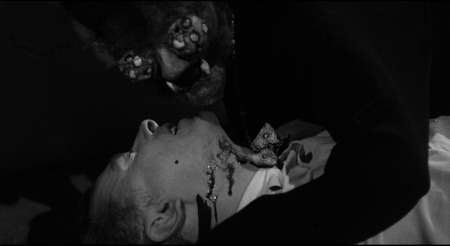
Both Noroi: The Curse and The Wolf House are ones I didn't care for whatsoever but I put them in places on the ranking that I thought were fair given that people should probably watch them regardless of my personal thoughts. Noroi's format didn't really lend itself to the escalation of tension and reveal of information that the plot demanded and I found myself thinking it meanders quite a bit. The Wolf House was an odd one where everything that was happening onscreen bounced off of me mostly because I felt intimately aware that I was watching a movie, that someone had made something and that I was now being shown it. Blah. People like these so don't let me stop you.
Our animated offerings this year...
Michael Jackson's Halloween more than anything feels like an unlicensed creation that later had an English fan dub commissioned, not something that actually aired on CBS twice. Any laughs that I found in this thing were the unintentional type as we open up with Bubbles talking and being Jackson's chauffeur; you know exactly what you're getting into. Very little of the plot is explained but I'm assuming Jackson (who has no lines given this was made posthumously) orchestrates a dark fantasy adventure to hook two...teenagers? People in their late 20's? And convince them to follow their dreams of performing instead of working a deadend dayjob. I'm not sure who the actual audience for this was given it feels like so much of it was made for children but I will say anything that has this much of Michael Jackson's music in it can't be all bad, though I'm not sure why they didn't largely stick with tracks from the album Thriller (in the contention for best album ever, I don't care).

Gamera: Rebirth is one I feel like I'm on the outside on compared to most other tokusatsu fans because I didn't really *love* to a serious degree even though, yes, Gamera is finally back. The first three episodes are mostly just kind of a slog for me with the backhalf not doing enough to retroactively make me think highly of it, though giving off End of Evangelion vibes may make me consider that a second viewing must be in order down the line. Rebirth's strongest attribute is that it feels like it takes into consideration and influence from every prior era of Gamera, no stone is left unturned, and it's a marked contrast from how every recent Godzilla property only captures a single facet of their respective character. But that also creates unique issues like how a lot of criticism of ongoing US military presence in Japan is undercut so there can be a white kid in the main cast (because white children were always present in half of the Showa series) or having the ancient civilization that genetically engineered the kaiju now being malicious and actively sacrificing children as a means of reshaping the world gives me vaguely anti-semitic tones, I don't know, Gamera is still here, I guess.

"I was just a little twerp who liked Scooby-Doo and Smurfs, now I was viewing Cthulhu mutants ruin the Earth."
Everyday that we have Inhumanoids is a gift. Inhumanoids is another Hasbro/Sunbow production like G. I. Joe, Transformers, or Jem and The Holograms, and it is truly tragic that it never got anywhere near that level of attention compared to its siblings. The fact that a 1980's action figure tie-in cartoon is named for its antagonists is only the start; the series follows a small paramilitary outfit of scientists named Earth Core that are tasked with more or less saving the world alongside the Mutores, elemental beings, when the Inhumanoids, eldritch abominations, are unleashed. The degree of world-building beyond your typical "good guys vs. bad guys" affair is astounding with villainous humans and virtuous monsters abounding, but Inhumanoids is mostly magical and remembered for saying fuck all to any type of broadcast standards. Seeing giant monsters destroy cities, undead armies, and spelunking deep into the Earth (where nightmares begin...) are just standard fair here, as are witnessing the actual Inhumanoids such as Metlar (basically the devil) or D'Compose (giant undead entity that can zombify people by touching them and uses his ribcage like a jail cell) in action. The first five episodes here are the pilot movie of sorts for the series which only lasted thirteen overall, and they get more grissly from here on out, but maybe it's best that Inhumanoids is the short lived cartoon and no the cartoon that went soft as early as its second season. I will never not love this show, to this day it's one of my favorite animated series from any decade, much less the 1980's.
Back to our regularly scheduled live-action programming...
Student Bodies is a fascinating film for a myriad of reasons the first of which is that there were somehow enough slasher films by 1981 for there to be a comedy poking fun at all the already established genre-cliches. It's essentially Scary Movie (2000) a full 20 years ahead of the curve only actually funny in spite of the subject matter frequently being as juvenile and prejudiced; but it also reminds me quite a bit of Scream (1996) with stuff like two killers working together. All I know is I was in for a decent time when the film opens with three identical shots of a house just with different framing text: "HALLOWEEN," "FRIDAY THE 13TH," "JAMIE LEE CURTIS' BIRTHDAY" and then the killer, The Breather, calls the opening kill girl doing nothing but breathing heavily, she hangs up, he calls back with "I SAID [heavy breathing]."
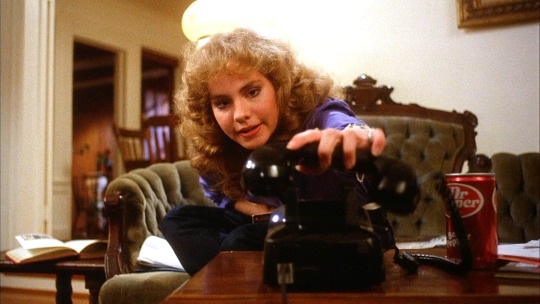
Return of The Living Dead is one of those films that should have destroyed the any artifically-imposed boundaries between "high" and "low" art. Every aspect of this film is brilliantly made, it just so happens to be made for stuff like Scooby-Doo music overlaid on top of thunderstorms over graveyards where one female character is stripping to the concept of dying. Media involving ghouls is incredibly oversaturated, and this was still the case in the 1980's where a film like this had to redefine the rules to make it so killing ghouls was basically a non-option. It only recently struck me on this viewing that that's the whole purpose of removing virtually all weaknesses they have, to keep the characters as the nail instead of the hammer. Compared to the Romero films, there's never a point where anyone is in control of the situation, it just escalates further and further until there is literally no way out. Taking that into consideration, there's no way this film couldn't have been a comedy that frames people getting swarmed and eaten by ghouls as hilarious.
The soundtrack and the faux-punk sensibilities lend this a daft feeling of "you shouldn't be watching this" in spite of it not being one of the MOST gory horror films of the 1980's. I still don't get how this never broke into the mainstream. I mean somehow people know that ghouls (in this film) speak and only eat brains but I can't go down to Target and get a Tarman action figure like I can one of Michael Myers. As such Return of The Living Dead remains a criminally overlooked film regardless of its subject matter. It's made me laugh and cringe and feel disgusted and revolt at the concept at dying but mostly it's made me feel a delicious sense of joy at seeing corpses rise out of the ground to the tune of "Do you wanna party? IT'S PARTY TIIIME!" Some of you need to sit in the corner and think about your life choices for making stupid shit like Re-Animator (1985) or fucking Shaun of The Dead (2004) more popular than this, fuck you.
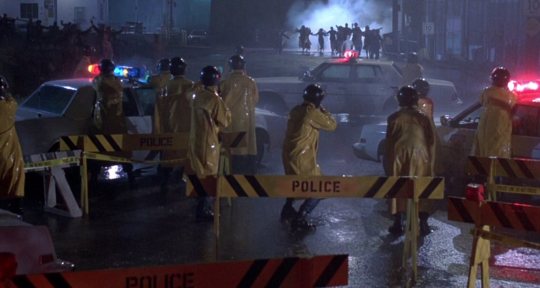
The act of watching Spider Baby is like discovering the missing link. For as much as 1960 gave us an explosion of horror (Eyes Without a Face, The Ship of Monsters, Psycho, Jigoku, Black Sunday, etc.) and Night of The Living Dead (1968) reins as the perennial transition point of the genre, Spider Baby is the road by which we go from The Cat and The Canary and The Old Dark House to the likes of The Texas Chainsaw Massacre and Eraserhead, it's magical finding an essential piece of a genre you love so much. Both the former and latter points of comparison are apt as a family of now only children [and their butler] suffering from Poe-esque hereditary illness have their condemned house set upon by distant relatives and everything slowly unravels.
Lon Chaney Jr. is an actor who for the longest time I felt never got a proper chance to shine wherein the last 25 years or so of his career was spent playing as side character actor in independent films. Spider Baby is his crowning achievement. Seeing him smile through almost tears on several occasions as he has to play bridge between worlds of sanity and madness and lie to everyone that he has some sense of control over the situation is brilliant in ways I always knew he was capable of but had never seen before this point. Bravo.
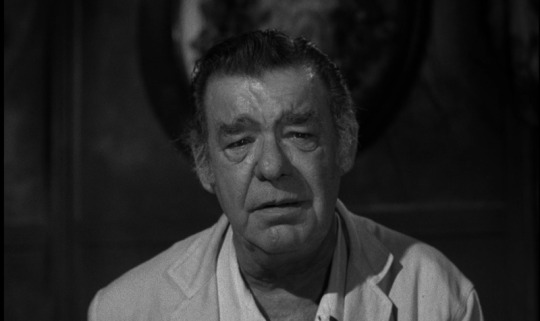
I will never not love Basket Case with everything I've got. This is the epitome of 1980's horror and my clear pick for best of the decade. It has everything from being a grungy putrid grindhouse spectacle to being an intimate character drama to everything presented through a wry ironic lense where you can't tell if any "bad" performances are all done on purpose. Between this, Brain Damage (1988), and Frankenhooker (1990), there is literally absolutely no reason why Frank Henenlotter shouldn't be more popular than Stuart Gordon, Brian Yuzna, and Lloyd Kaufman *combined*. It's tragic that the world of cinema being enclosed and captured by studios again in the late 1980's prevented us from getting more from him, but realistically could we ask anymore than what we already got from Basket Case? I could watch this every day and never grow tired of it. I will never stop making more and more people watch this.
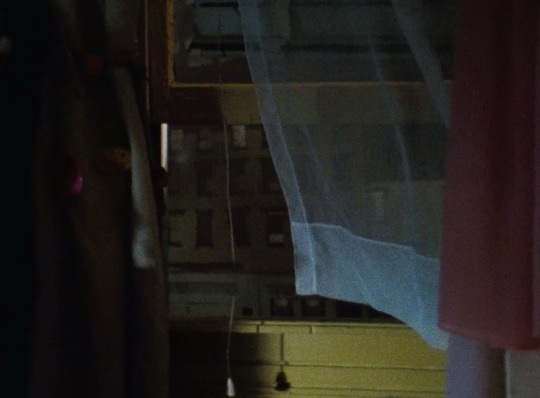
If Basket Case is the apex of 1980's horror, then Messiah of Evil is the same for 1970's horror. This is one of the most efficient horror films ever made in how not a single frame is wasted, the opening scene is literally a guy running from unseen force, seeking refuge, getting his throat slit, cue title card with synth music that then leads us to a sunburnt hallway as our narrator descends into acceptance of complete lack of control of the situation. Every night shot in this film must be 50 - 75% completely black with whatever headlight or store front there is just making the scenery look like a dollhouse that our characters are trapped inside. There's so many shots of people running away or walking down streets that make them look tiny as the camera is so far.
Every scene is an exercise in building up dread. There's no point where the film relents, something awful is not only coming, it's already here and there's nothing anyone can do. What I love particularly is that the mystery being laid out doesn't offer any answers because there's another mystery on top of what our characters find out only too late. Layers upon layers of dread that even the titular Messiah of Evil isn't the center of. The world is a cruel fucking place where this film languishes in obscurity whilst shit like The Exorcist enjoys mainstream attention. A lot of my taste amounts to "why isn't this thing I like more popular" and cases like Messiah of Evil vindicate me.
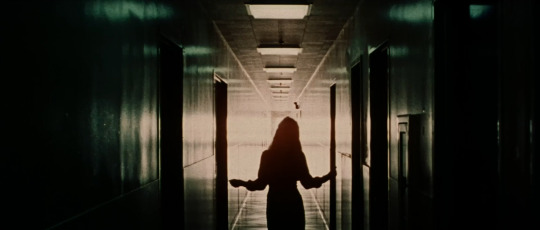
"Godzilla is the son of the atomic bomb. He is a nightmare created out of the darkness of the human soul. He is the sacred beast of the apocalypse." - Tomoyuki Tanaka
Generally a yearly trend is that a #1 pick for Halloween is self-evident to me and this year it was Basket Case for all of 30 seconds until I picked Godzilla back up.
There's something to be said how Godzilla isn't quite a horror monster? Terrifying but not necessarily creepy, but what power do things that go bump in the night have against the destruction of everything you know? Everytime I watch Godzilla is like the very first time, when flashing lights out at sea destroy fishing ships I have no idea what happened, or at least any much of a clue as anyone in film does when we're told that the entire ocean exploded.
Godzilla is a reptile, but lacks scales and its entire body is coated in keloid scars. In 1954 Godzilla must have been the largest monster every committed to film, trains are derailed from running against its ankle and bell and radio towers are throttled for being a sensory inconvenience. Godzilla's first on-screen appearance on Odo Island is obscured by a hurricane but the impression is clear; you can't fight Godzilla in the same way you can't fight a natural disaster. When Tokyo is reduced to complete ruin amidst a sea of flames, it's an onslaught of destruction never before seen in a film of this genre. Survivors being afflicted with radiation poisoning shows that Godzilla will claim victims long after being driven back to sea.
There's a sheer apocalyptic dread to all of this sensed by all the characters. Love tries to exist on the edge of annihilation. There's nothing that can be done but persevere and maybe hope tomorrow will be better. A scene that always strikes me is when Serizawa is adamant about not using the Oxygen Destroyer until forcibly confronted with the results of one night of Godzilla making landfall in Japan. The absolute pain felt by everyone in the finale starts here, things couldn't play out any differently as the "scientist of the century" can't join in and celebrate his victory.
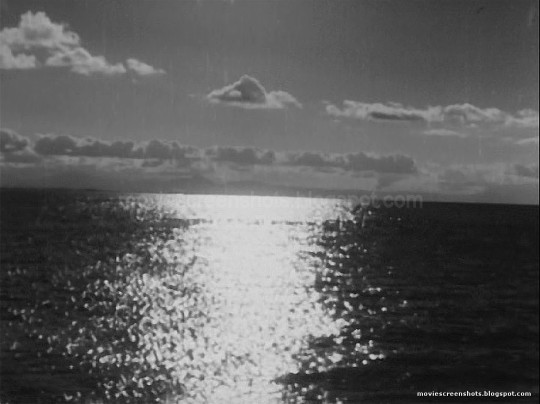
Godzilla is a rare perfect film. I will never tire of it.
25 notes
·
View notes
Text
Taking a walk on memory lane ✨️ ... on the birthday of the great Mr. Tennant, who stole my heart from the beginning in 1986. He has never given it back ever since, and that's a good thing! (Chris, I luv u, too!) ♡
In honour of this occasion, I've put together some of my favourite moments from the Berlin concert during PSB's Dreamworld Tour on 11 June 2022 plus a short sequence of the It's Alright music video from 1989, one of my most beloved PSB songs to this day. ☆
Here's to you, Neil 🥂 ... Happy Birthday! 🎉
And the music plays forever ... 💫
#Neil Tennant#Happy Birthday love ♡♡♡#10 July 1954#Pet Shop Boys#Chris Lowe#Dreamworld Tour 2022#Berlin - Germany ♡#It's Alright#1989#1980s#80s memories ☆#thank you for the music ... I'll always love you boys! 💕#my videos#my edits
9 notes
·
View notes
Text

Beware #10 - Trojan, July 1954.
Cover art by Frank Frazetta & Sid Check.
212 notes
·
View notes
Text
Kismet Characters & Family Trees Part Four:

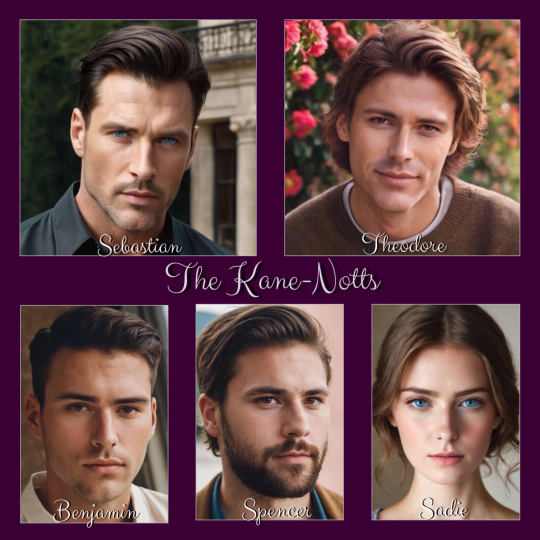

Liam Kane (1926) HUFFLEPUFF m. Reagan O'Connell (1926) RAVENCLAW (1947):
1. Spencer Liam Kane (1950) GRYFFINDOR m. Sadira Amari Kane (1948) NA (1968):
a) Selene Sadira Kane (9 May 1968) NA m. Beaumont DeRose (1967) NA (1991)
i) Piper DeRose (9 June 1994)
ii) Amara DeRose (6 March 1996)
iii) Felix Sebastian DeRose (1 August 1999)
b) Soraya Zoya Kane (17 July 1972)
c) Sebastian Christopher Kane (1 August 1977) m. Theodore Nott (21 October 1979) SLYTHERIN (2005):
aa) Benjamin Christopher Kane-Nott (20 May 2008) GRYFFINDOR m. Nicki Zabini (14 March 2014) HUFFLEPUFF (2033):
ai) Torin Theodore Kane-Nott (29 October 2036) SLYTHERIN
aii) Quaid Sebastian Kane-Nott (14 August 2038) GRYFFINDOR
aiii) Sabrina Aspen Kane-Nott (17 March 2042) HUFFLEPUFF
aiv) Briella Katherine Kane-Nott (6 July 2045) SLYTHERIN
bb) Spencer Thelonius Kane-Nott (3 July 2010) SLYTHERIN m. Cedrella Potter (21 October 2010) SLYTHERIN (2036):
ai) Logan Theodore Kane-Nott (23 March 2040) GRYFFINDOR
aii) Zeke Harry Kane-Nott (21 January 2042) SLYTHERIN
aiii) Nolan Everett Kane-Nott (11 November 2044) RAVENCLAW
aiv) Westley Sebastian Kane-Nott (9 December 2046) GRYFFINDOR
cc) Sadira “Sadie” Aster Soraya Kane-Nott (10 September 2013) RAVENCLAW m. Rowan Wood (14 March 2009) GRYFFINDOR (2037):
ai) Sebastian “Bash” Oliver Wood (22 Mary 2040) GRYFFINDOR
aii) Soren Rowan Wood (30 July 2043) RAVENCLAW
aiii) Soraya Theodora Wood (10 June 2046) SLYTHERIN
Cantankerous Nott (1902) SLYTHERIN m. Céline Volant (1908) RAVENCLAW (1933):
1. Tabitha Nott (1936) SLYTHERIN m. Titus Avery Senior (1927) SLYTHERIN (1954):
a) Titus Avery Junior (1956) SLYTHERIN m. Scarlett Lympsham (1982) SLYTHERIN) (1996):
i) Charlotte Rose Avery (9 October 1997) adopted by Emmeline and Mona Vance in 1999 becoming Charlotte Rose Avery Vance RAVENCLAW
b) Aurelius Avery (1959) SLYTHERIN m. Anna Kama (1959) SLYTHERIN (1975):
i) Aelius Avery (1976) SLYTHERIN m. Dasha Dolohov (1974) SLYTHERIN (1996):
aa) Dmitri Aelius Avery (3 March 1997) SLYTHERIN
ii) Aeliana Avery (1978) GRYFFINDOR m. Holden Ledbury (1979) GRYFFINDOR (1996):
aa) Evelynn Aeliana Avery (3 October 1997) adopted by Emmeline and Mona Vance in 1998 as Evelynn Aeliana Avery Vance SLYTHERIN
2. Thaddeus Cantankerous Nott (1939) SLYTHERIN m. Aster Rosier (1961) SLYTHERIN (1978):
i) Theodore Thaddeus Nott (21 October 1979) - secret son of Thelonius Nott - SLYTHERIN m. Sebastian Kane (1 August 1977) NA (2005):
aa) Benjamin Christopher Kane-Nott (20 May 2008) GRYFFINDOR m. Nicki Zabini (14 March 2014) HUFFLEPUFF (2033):
ai) Torin Theodore Kane-Nott (29 October 2036) SLYTHERIN
aii) Quaid Sebastian Kane-Nott (14 August 2038) GRYFFINDOR
aiii) Sabrina Aspen Kane-Nott (17 March 2042) HUFFLEPUFF
aiv) Briella Katherine Kane-Nott (6 July 2045) SLYTHERIN
bb) Spencer Thelonius Kane-Nott (3 July 2010) SLYTHERIN m. Cedrella Potter (21 October 2010) SLYTHERIN (2036):
ai) Logan Theodore Kane-Nott (23 March 2040) GRYFFINDOR
aii) Zeke Harry Kane-Nott (21 January 2042) SLYTHERIN
aiii) Nolan Everett Kane-Nott (11 November 2044) RAVENCLAW
aiv) Westley Sebastian Kane-Nott (9 December 2046) GRYFFINDOR
cc) Sadira “Sadie” Aster Soraya Kane-Nott (10 September 2013) RAVENCLAW m. Rowan Wood (14 March 2009) GRYFFINDOR (2037):
ai) Sebastian “Bash” Oliver Wood (22 Mary 2040) GRYFFINDOR
aii) Soren Rowan Wood (30 July 2043) RAVENCLAW
aiii) Soraya Theodora Wood (10 June 2046) SLYTHERIN
3. Thelonius Rodrigo Nott (1960) - secret affair with Reigna Rodríguez - raised by Cantankerous and Céline; has affair with Thad's wife Aster and produces Theo secretly (d. 1984)
Emerson Rosier (1886) SLYTHERIN m. Drusilla Rosier (1888) SLYTHERIN (1909):
1. Enzo Rosier (1910) SLYTHERIN m. Alma Burke (1913) SLYTHERIN (1929):
a) Ezekiel Rosier (1930) SLYTHERIN m. Wanda Black (1930) SLYTHERIN (1955):
i) Evan Rosier (1959) SLYTHERIN
ii) Aster Rosier (1961) SLYTHERIN m. Thaddeus Cantankerous Nott (1939) SLYTHERIN (1978):
i) Theodore Thaddeus Nott (21 October 1979) - secret son of Thelonius Nott - SLYTHERIN m. Sebastian Kane (1 August 1977) NA (2005):
aa) Benjamin Christopher Kane-Nott (20 May 2008) GRYFFINDOR m. Nicki Zabini (14 March 2014) HUFFLEPUFF (2033):
ai) Torin Theodore Kane-Nott (29 October 2036) SLYTHERIN
aii) Quaid Sebastian Kane-Nott (14 August 2038) GRYFFINDOR
aiii) Sabrina Aspen Kane-Nott (17 March 2042) HUFFLEPUFF
aiv) Briella Katherine Kane-Nott (6 July 2045) SLYTHERIN
bb) Spencer Thelonius Kane-Nott (3 July 2010) SLYTHERIN m. Cedrella Potter (21 October 2010) SLYTHERIN (2036):
ai) Logan Theodore Kane-Nott (23 March 2040) GRYFFINDOR
aii) Zeke Harry Kane-Nott (21 January 2042) SLYTHERIN
aiii) Nolan Everett Kane-Nott (11 November 2044) RAVENCLAW
aiv) Westley Sebastian Kane-Nott (9 December 2046) GRYFFINDOR
cc) Sadira “Sadie” Aster Soraya Kane-Nott (10 September 2013) RAVENCLAW m. Rowan Wood (14 March 2009) GRYFFINDOR (2037):
ai) Sebastian “Bash” Oliver Wood (22 Mary 2040) GRYFFINDOR
aii) Soren Rowan Wood (30 July 2043) RAVENCLAW
aiii) Soraya Theodora Wood (10 June 2046) SLYTHERIN
2) Druella Rosier (1928) SLYTHERIN m. Cygnus Black (1928) SLYTHERIN (1946):
a) Bellatrix Black (1951) SLYTHERIN m. Rodolphus Lestrange (1951) SLYTHERIN (1969)
b) Andromeda Black (1953) SLYTHERIN m. Edward Tonks (1953) Hufflepuff (1971):
i) Nymphadora Andromeda Mary-Ellen Tonks (18 May 1973) HUFFLEPUFF m. Remus Lupin (10 March 1960) GRYFFINDOR (1995):
aa) Edward "Teddy" Remus Lupin (11 April 1998) m. Victoire Gabrielle Weasley (2 May 1999) RAVENCLAW m. Teddy Lupin (11 April 1998) HUFFLEPUFF (2020):ai) Liam Remus Lupin (6 February 2022) GRYFFINDOR m. Naomi Winston (2024) HUFFLEPUFF (2048):
1a) Andromeda Lupin (2050) HUFFLEPUFF
1b) Hope Lupin (2054) RAVENCLAW
1c) Lyla Lupin (2058) SLYTHERIN
aii) Charlotte “Charlie” Dora Lupin (9 June 2024) RAVENCLAW m. Luke Logan (2024) SLYTHERIN (2050):
1a) John Logan (2054) SLYTHERIN
1b) Declan Logan (2059) RAVENCLAW
aiii) Kingston Harry Lupin (17 April 2027) GRYFFINDOR m. Lorelai Robards (2030) GRYFFINDOR (2057):
1a) Thomas James “TJ” Lupin (2060) GRYFFINOR
c) Narcissa Black (1955) SLYTHERIN m. Lucius Malfoy (1953) SLYTHERIN (1974):
i) Draco Lucius Malfoy (5 June 1980) SLYTHERIN m. Astoria Greengrass (7 December 1981) SLYTHERIN 2004) m. Circe Castellanos (4 August 1990) RAVENCLAW (2040):
aa) Scorpius Hyperion Malfoy (6 January 2006) SLYTHERIN m. Albus Potter (1 June 2006) SLYTHERIN (2031):
1a) Lyra Astoria Malfoy (1 June 2037) RAVENCLAW
1b) Celeste Ginevra Malfoy (5 March 2039) RAVENCLAW
1c) Archer Kai Malfoy (6 July 2044) SLYTHERIN
Thanks to @ellieoryan7447 for taking the time and effort to create these.
#harry potter fanfiction#breanie#the world of asc#the kismet trilogy#the kismet trilogy by breanie#characters and family trees
14 notes
·
View notes
Text





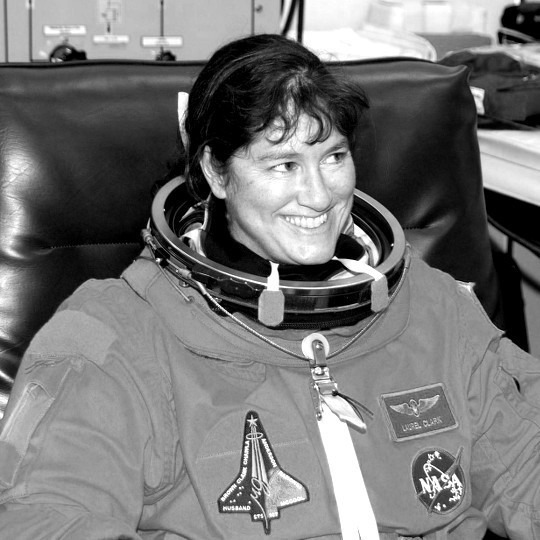

Sixteen minutes from home. Remembering the crew of Columbia STS-107, twenty years ago today.
Colonel Rick Douglas Husband, USAF (July 12, 1957 – February 1, 2003)
Commander William Cameron McCool, USN (September 23, 1961 – February 1, 2003)
Captain David McDowell Brown, USN (April 16, 1956 – February 1, 2003)
Kalpana Chawla (March 17, 1962 – February 1, 2003)
Lieutenant Colonel Michael Phillip Anderson, USAF (December 25, 1959 – February 1, 2003)
Captain Laurel Blair Salton Clark, M.D., USN (March 10, 1961 – February 1, 2003)
Colonel Ilan Ramon, IAF (June 20, 1954 – February 1, 2003)
#hail columbia#may their memories be a blessing#STS-107#columbia#space shuttle#NASA#astronauts#rick husband#willie mccool#dave brown#kalpana chawla#kc chawla#mike anderson#michael anderson#laurel clark#ilan ramon
120 notes
·
View notes
Text
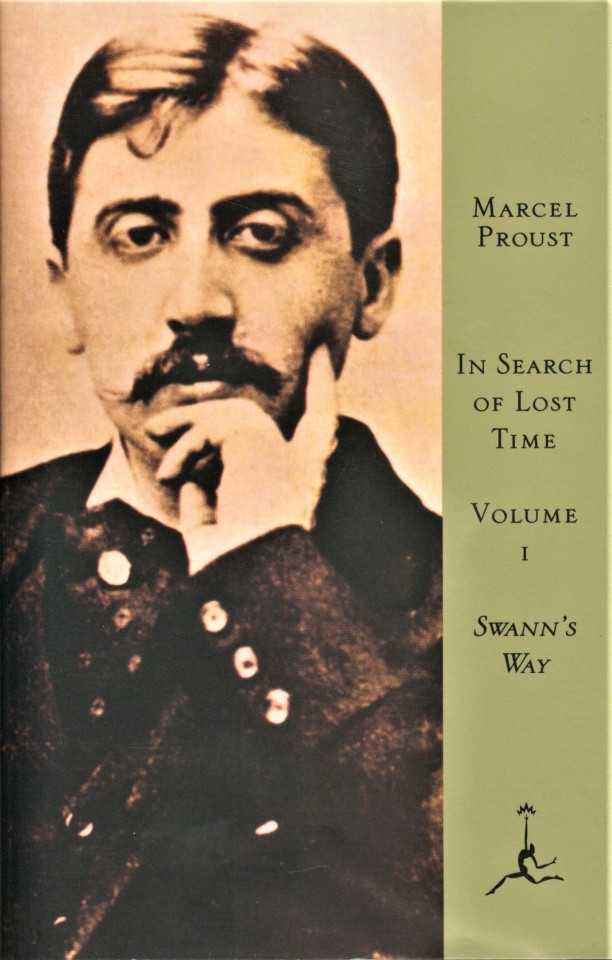

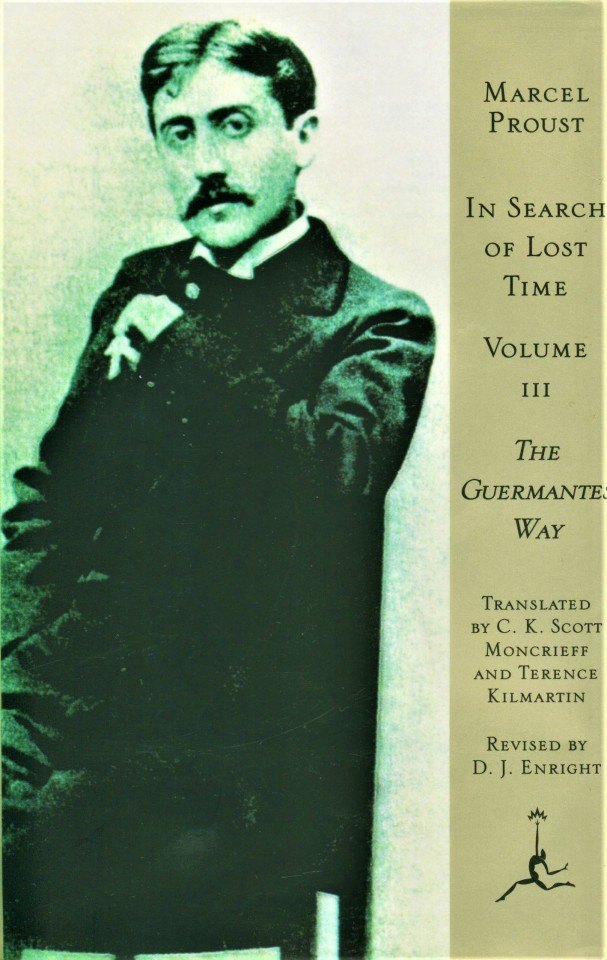
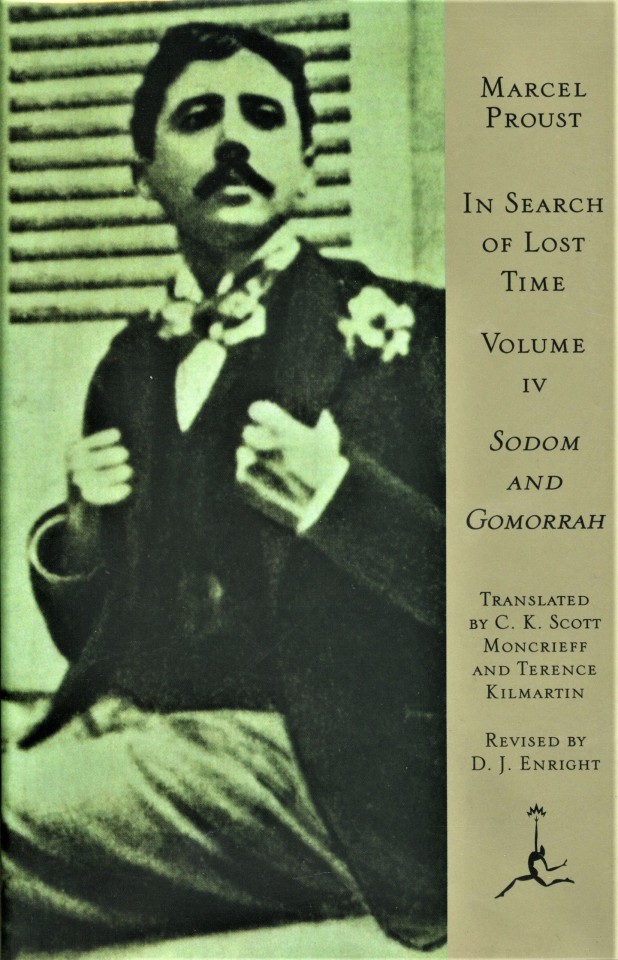
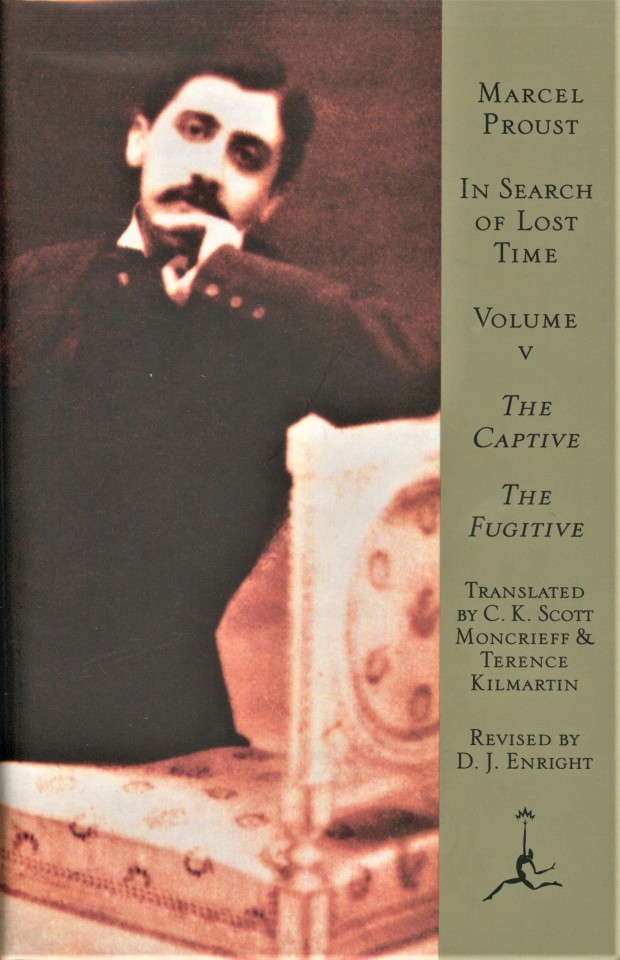

Milestone Monday
On this day, July 10 in 1871, French novelist Marcel Proust (Valentin Louis Georges Eugène Marcel Proust, to be exact) was born to an upper-class family in the Paris Borough of Auteuil. Born at a time of great change for French society, with the decline of the aristocracy and the rise of the middle class, Proust's most well-known publication, the monumental, 7-volume novel À la recherche du temps perdu (currently translated as In Search of Lost Time, but previously translated as Remembrance of Things Past) explores the effects of these changes in personal and intimate ways.
Proust began work on this novel in 1909 and continued to work on it until his final illness in the autumn of 1922 forced him to stop. It was published in France between 1913 and 1927, and has become one of the hallmarks of world literature from the 20th century. The novel unfolds as a series of memories initiated by the sensation of a sip of tea in which he had dipped a madeleine cake. The sensation sparks dormant recollections of experiences from childhood to adulthood in fin de siècle France society.
The first six volumes of the novel were first translated into English by the Scottish author and translator C. K. Scott Moncrieff from 1922 to 1930, with the final volume translated by British novelist and translator Stephen Hudson in 1931. Terence Kilmartin revised the Scott Moncrieff translation in 1981 (with the final volume translated by Andreas Mayor) using the new French edition of 1954. The copy shown here is a revision of that revision by British academic D. J. Enright, based on the French Bibliothèque de la Pléiade edition of 1987-1989, published in six volumes by the Modern Library in New York (and by Chatto and Windus in London) in 1992. It is the first edition to use the more current translation of the title, In Search of Lost Time.
View other Milestone Monday posts.
#Milestone Monday#milestones#Marcel Proust#birthdays#French authors#In Search of Lost Time#Rememberance of Things Past#À la recherche du temps perdu#C. K. Scott Moncrieff#Terence Kilmartin#D. J. Enright#Modern Library
52 notes
·
View notes
Text

Eartha Mae Kitt (January 17, 1927 – December 25, 2008) died 18 years ago today at the age of 81. Her singing style and her 1953 recordings of "C'est Si Bon" and the enduring Christmas novelty smash "Santa Baby", which were both US Top 10 hits. Orson Welles once called her the "most exciting woman in the world". Kitt began her career in 1943 with the Katherine Dunham Company and appeared in the 1945 original Broadway production of the musical Carib Song. In the early 1950s, she had six US Top 30 hits, including "Uska Dara" and "I Want to be Evil". Her other notable recordings include the UK Top 10 hit "Under the Bridges of Paris" (1954), "Just an Old Fashioned Girl" (1963) and "Where Is My Man" (1983). She took over the role of Catwoman in 1967 for the third and final season of the Batman television series, replacing Julie Newmar. In 1968, her career in America suffered after she made anti-war statements at a White House luncheon. Ten years later, she made a successful return to Broadway in the 1978 original production of the musical Timbuktu!, for which she received the first of her two Tony Award nominations. Her second was for the 2000 original production of the musical The Wild Party.
She voiced Yzma in both the 2000 animated film The Emperor's New Groove and the 2006–08 TV series The Emperor's New School, winning two Emmy Awards, the second shortly before her death. Kitt won a third Emmy posthumously in 2010 for The Wonder Pets.
16 notes
·
View notes